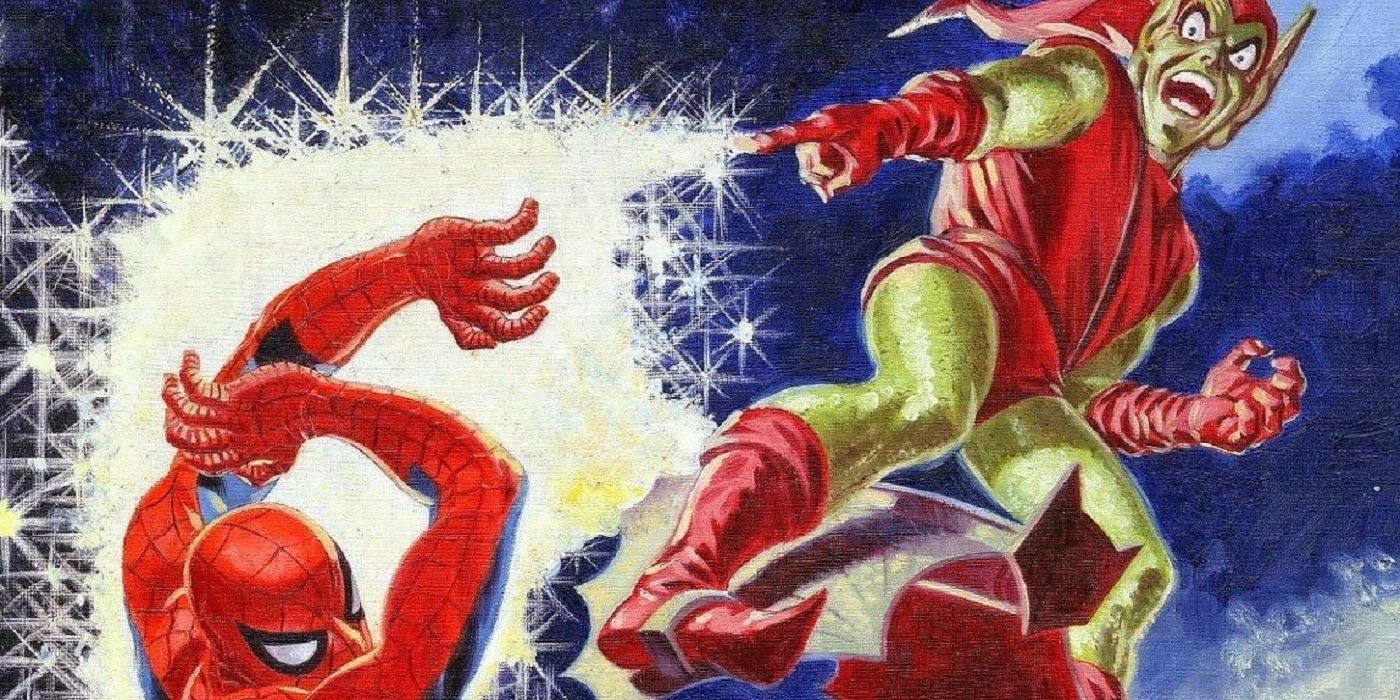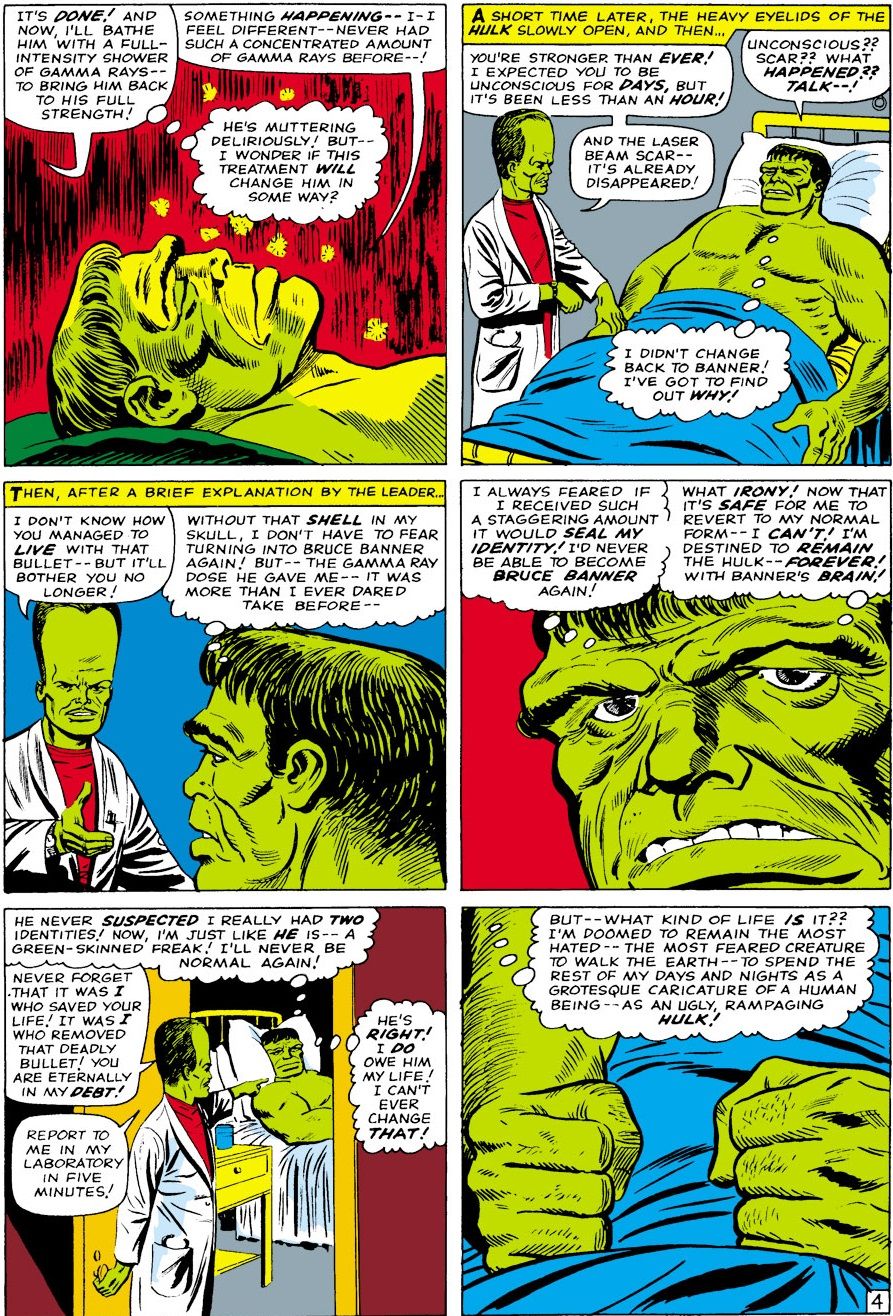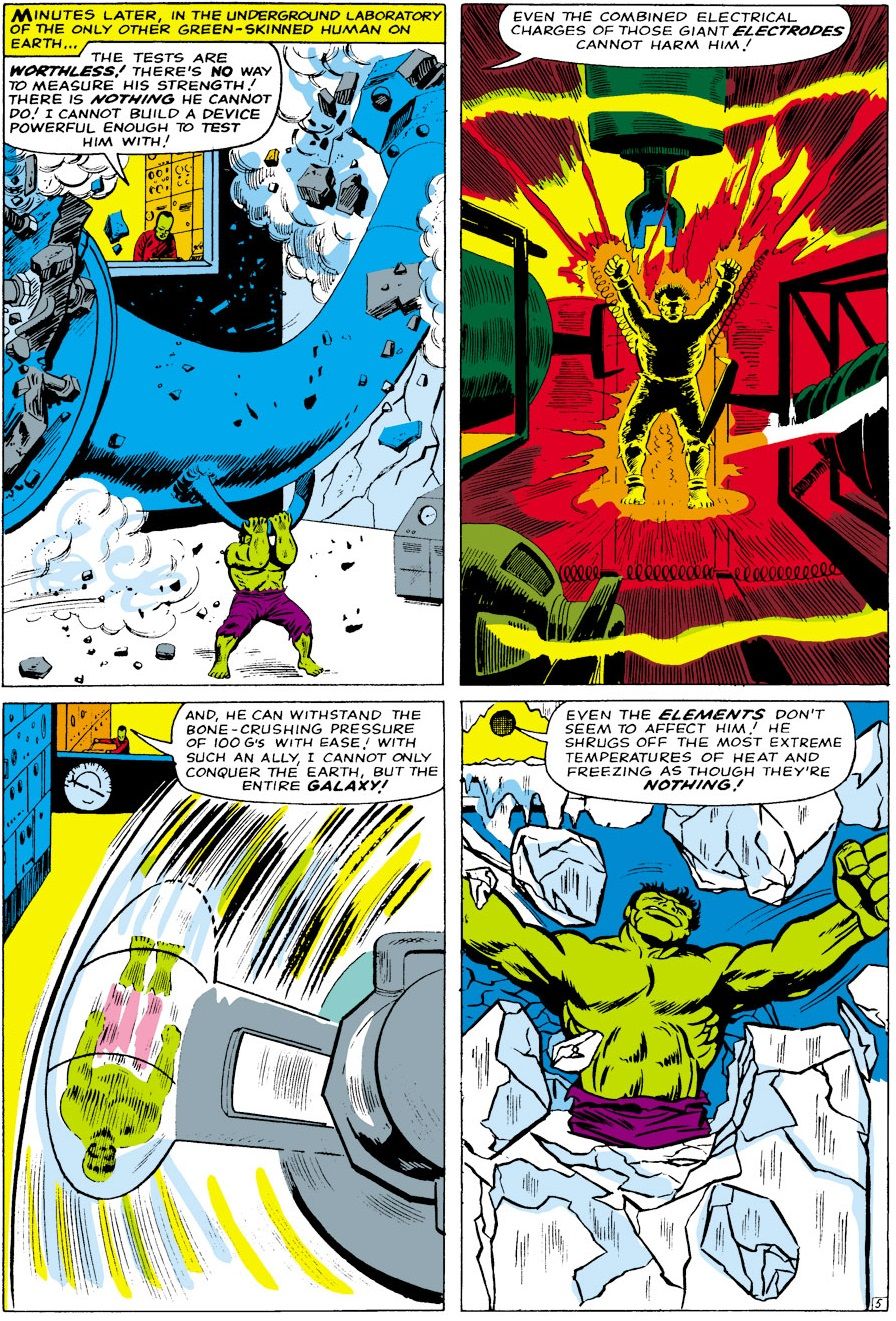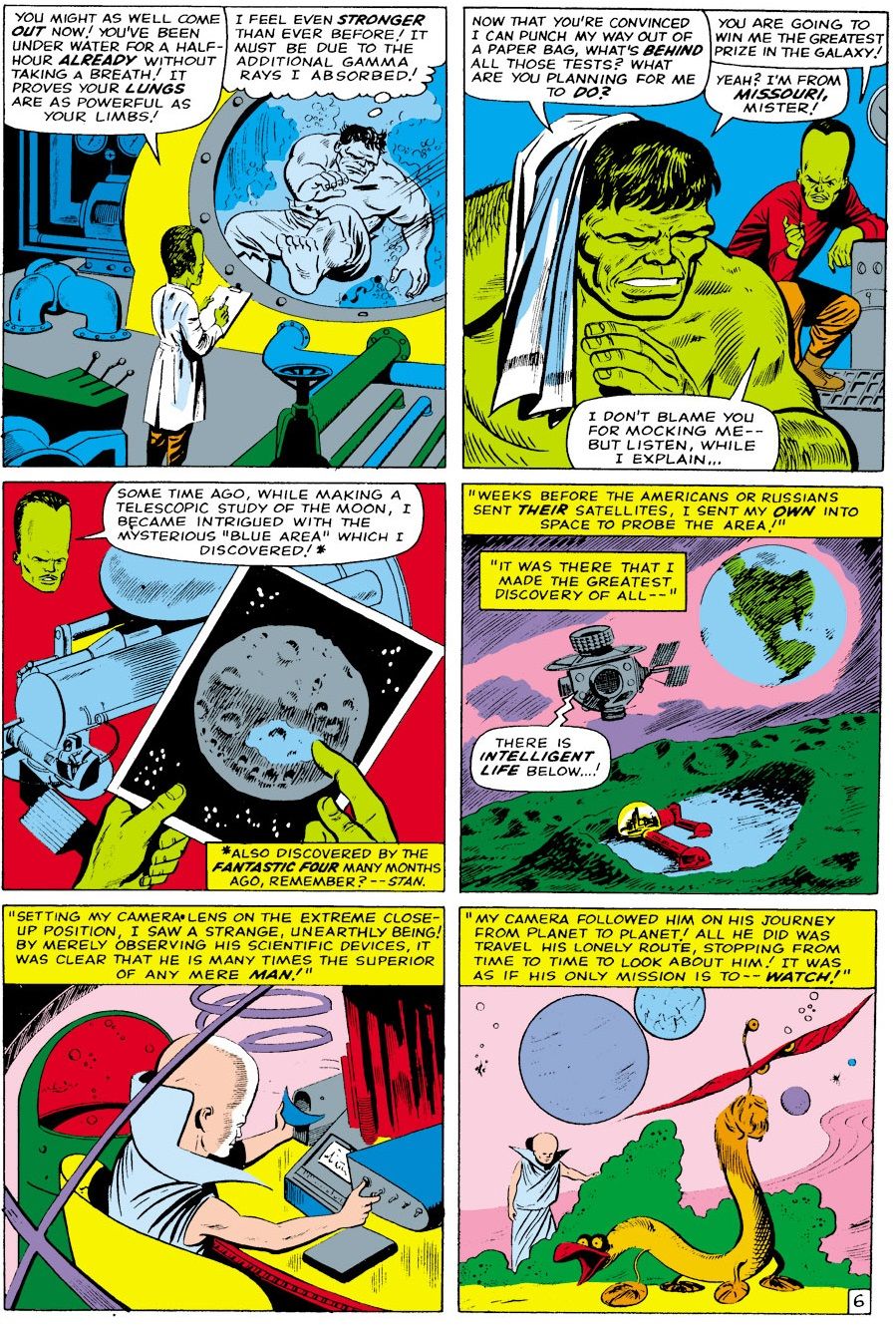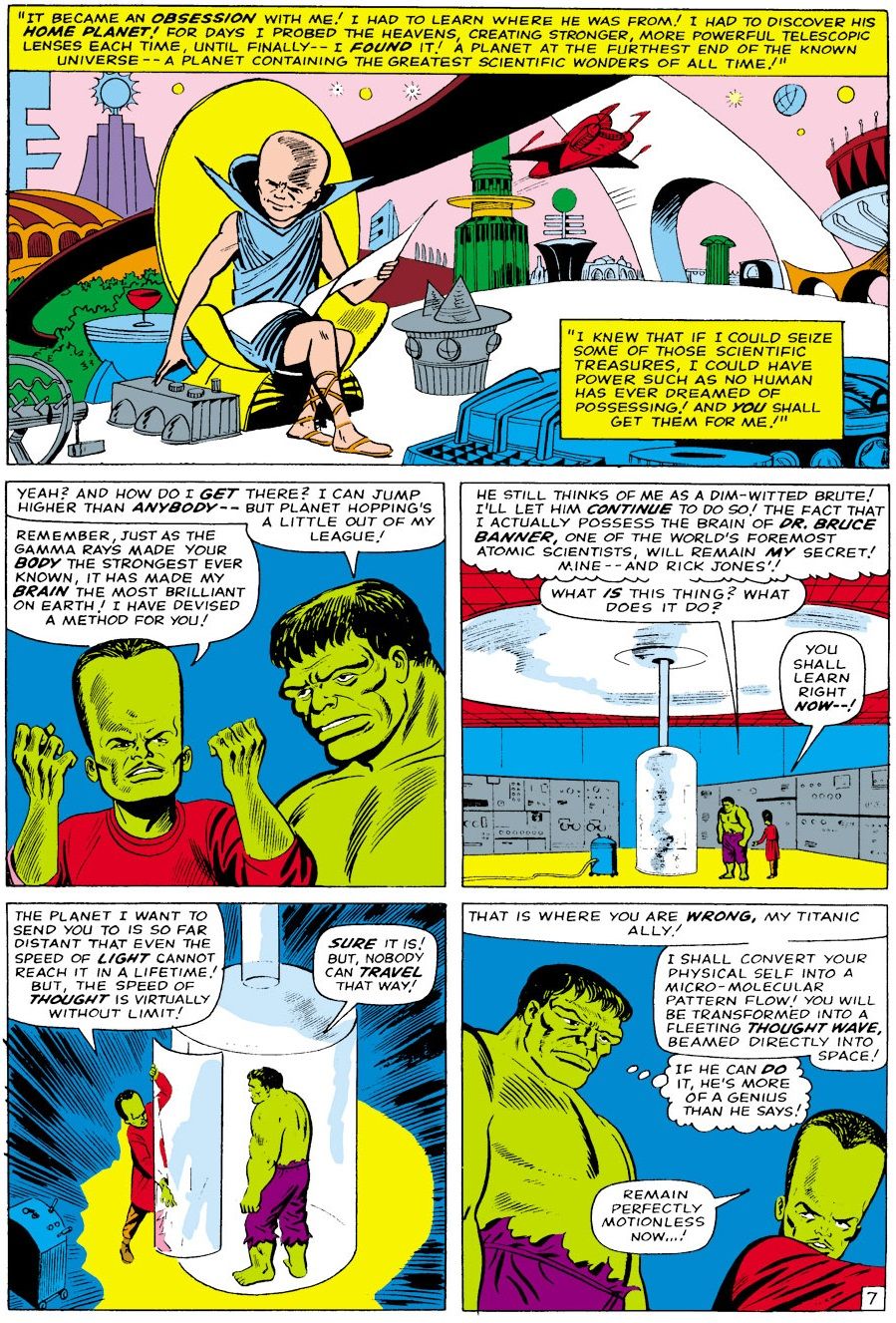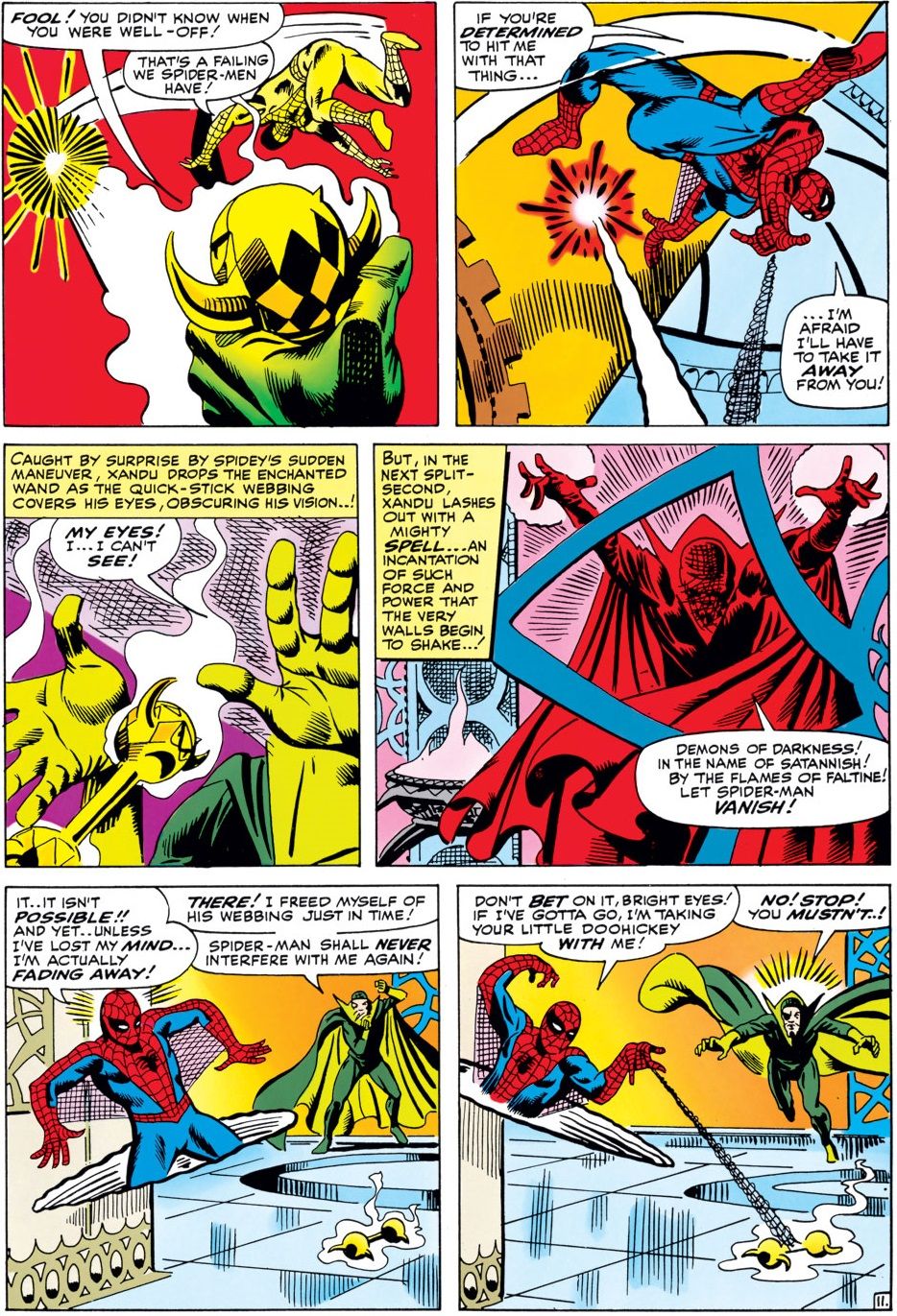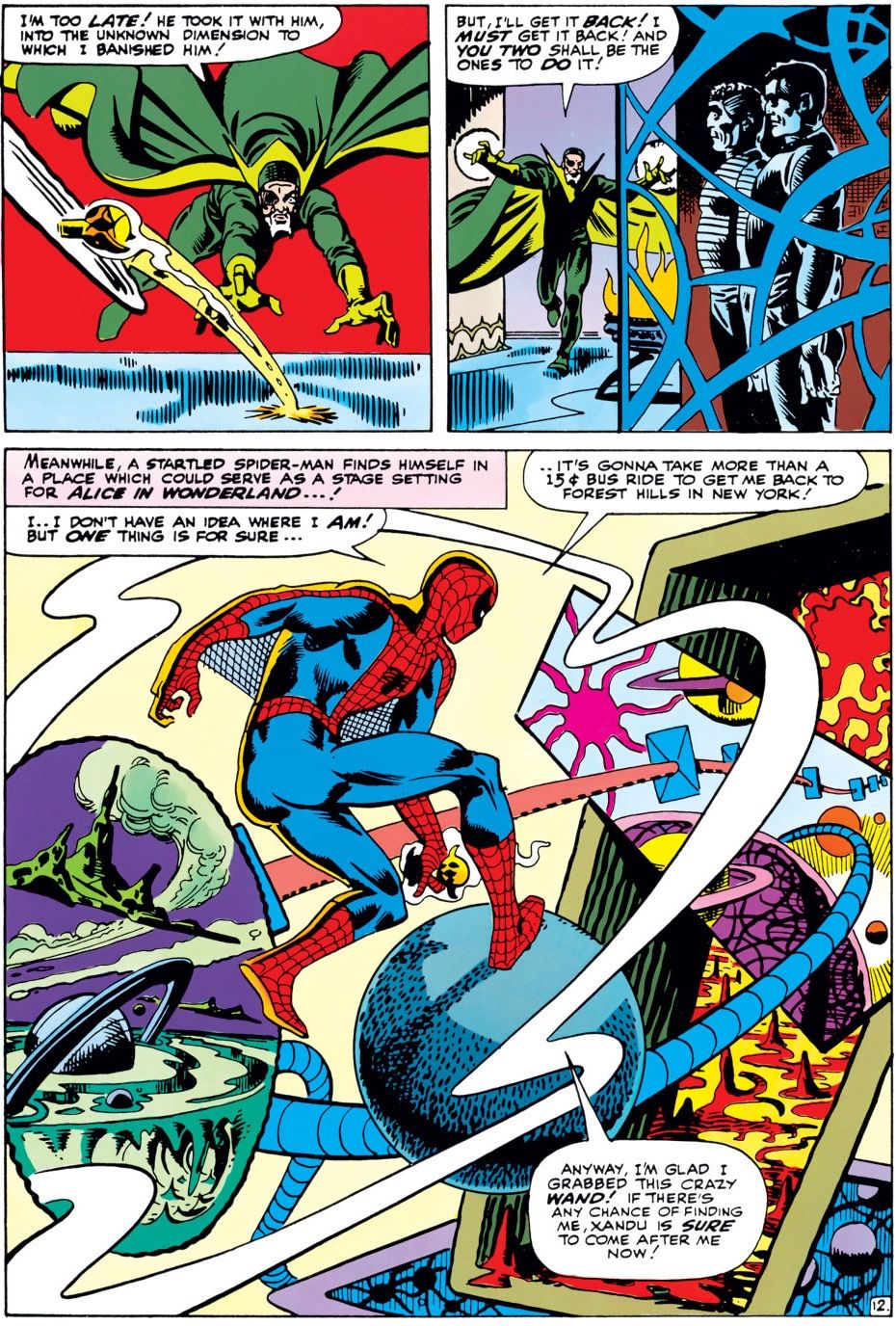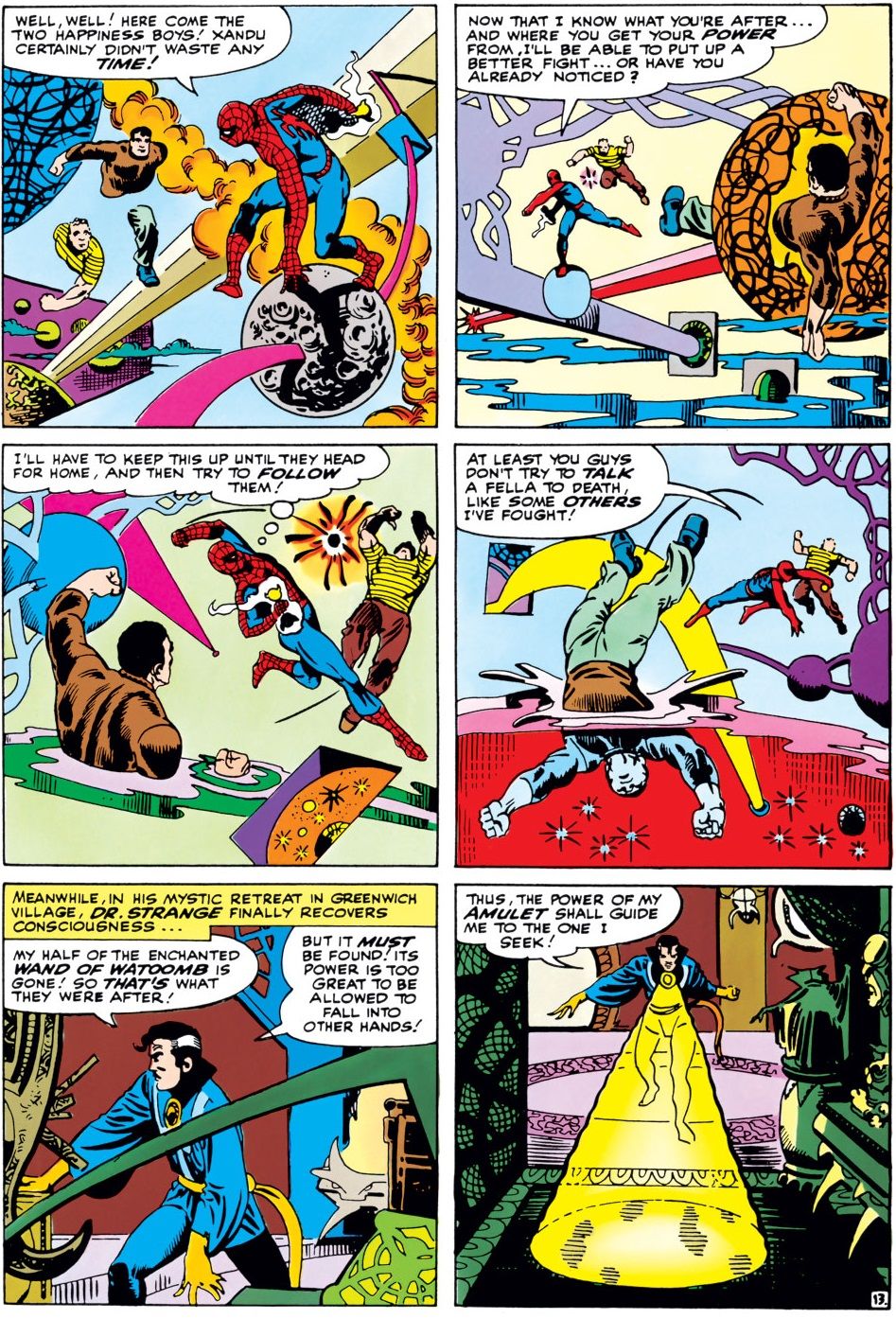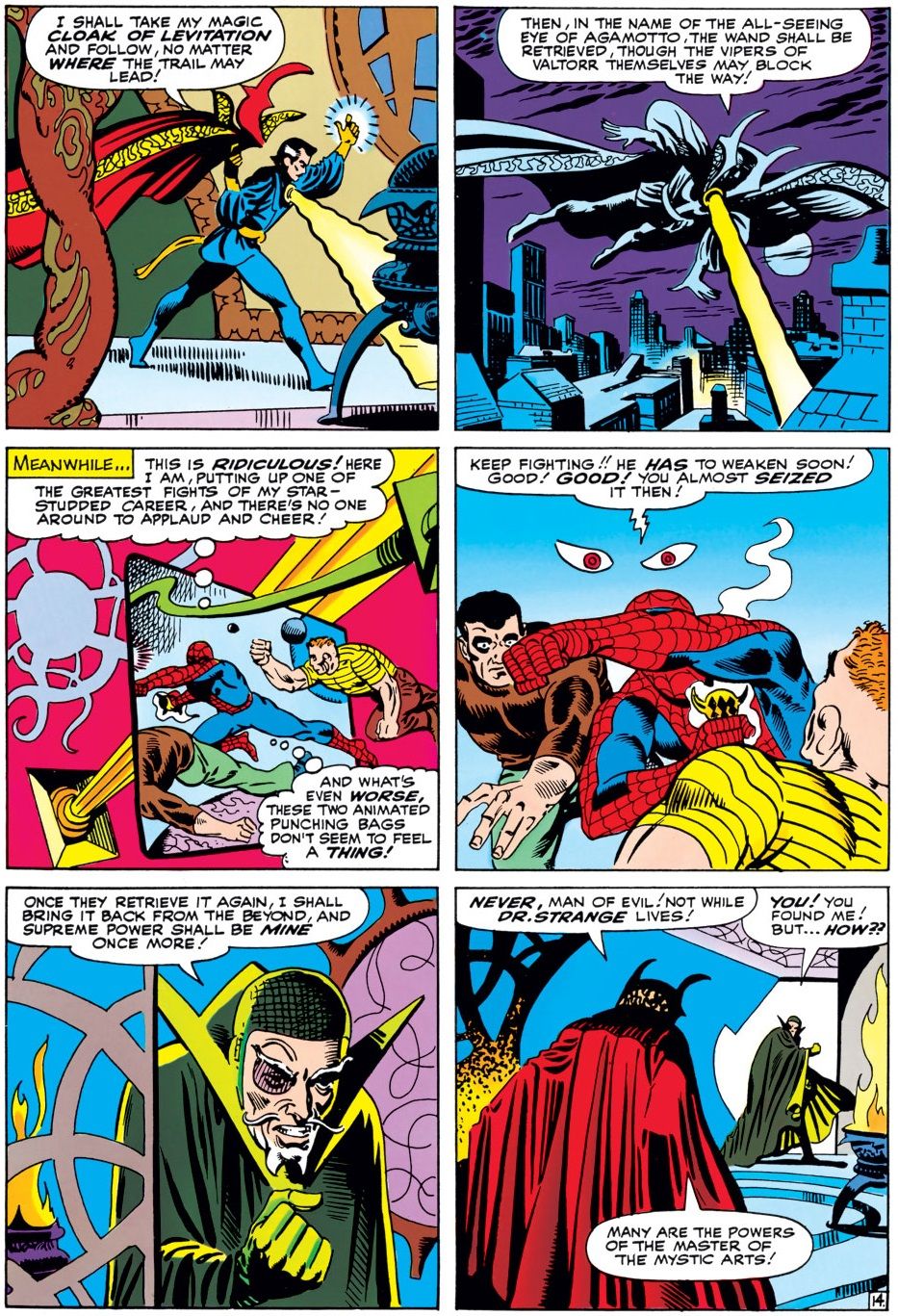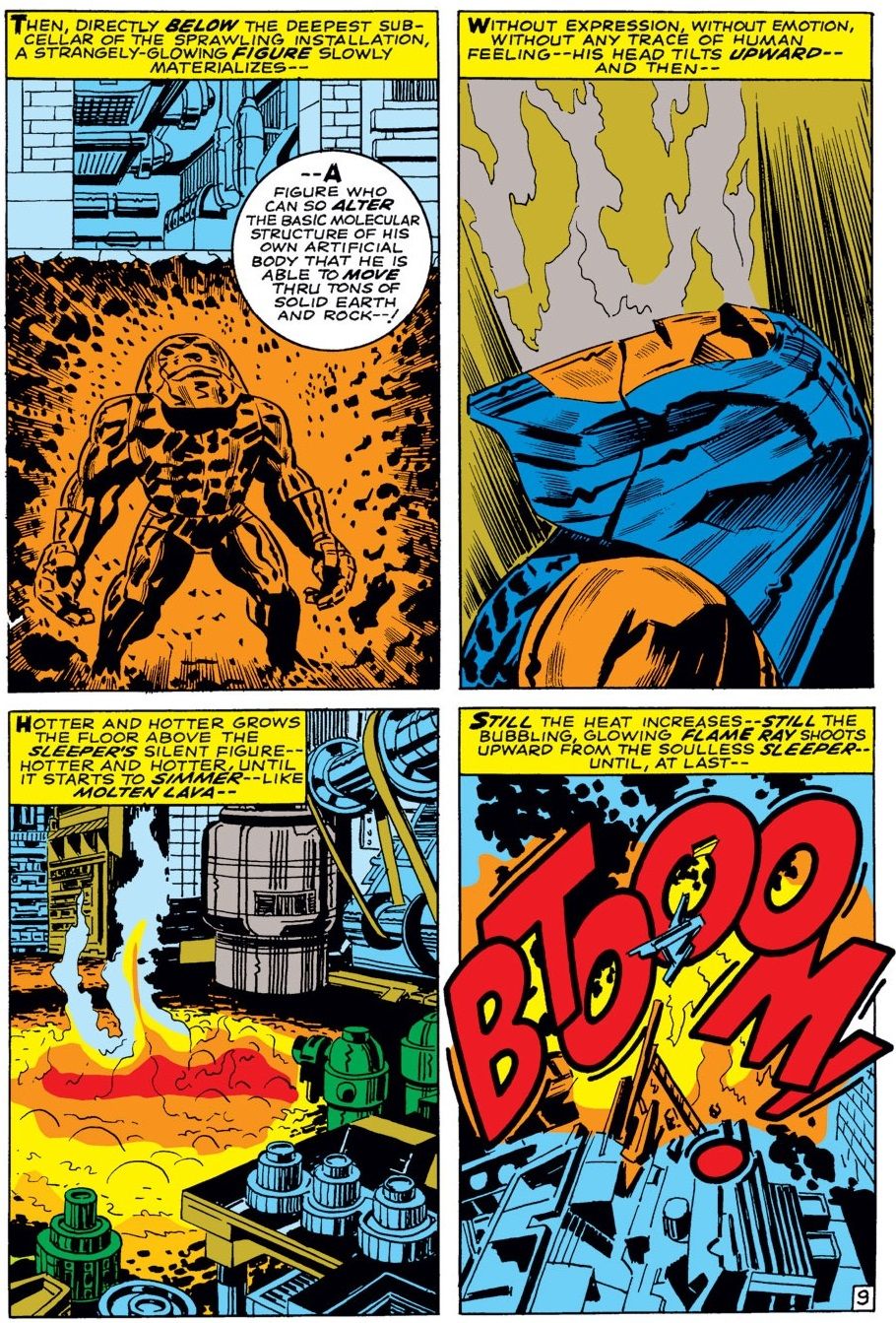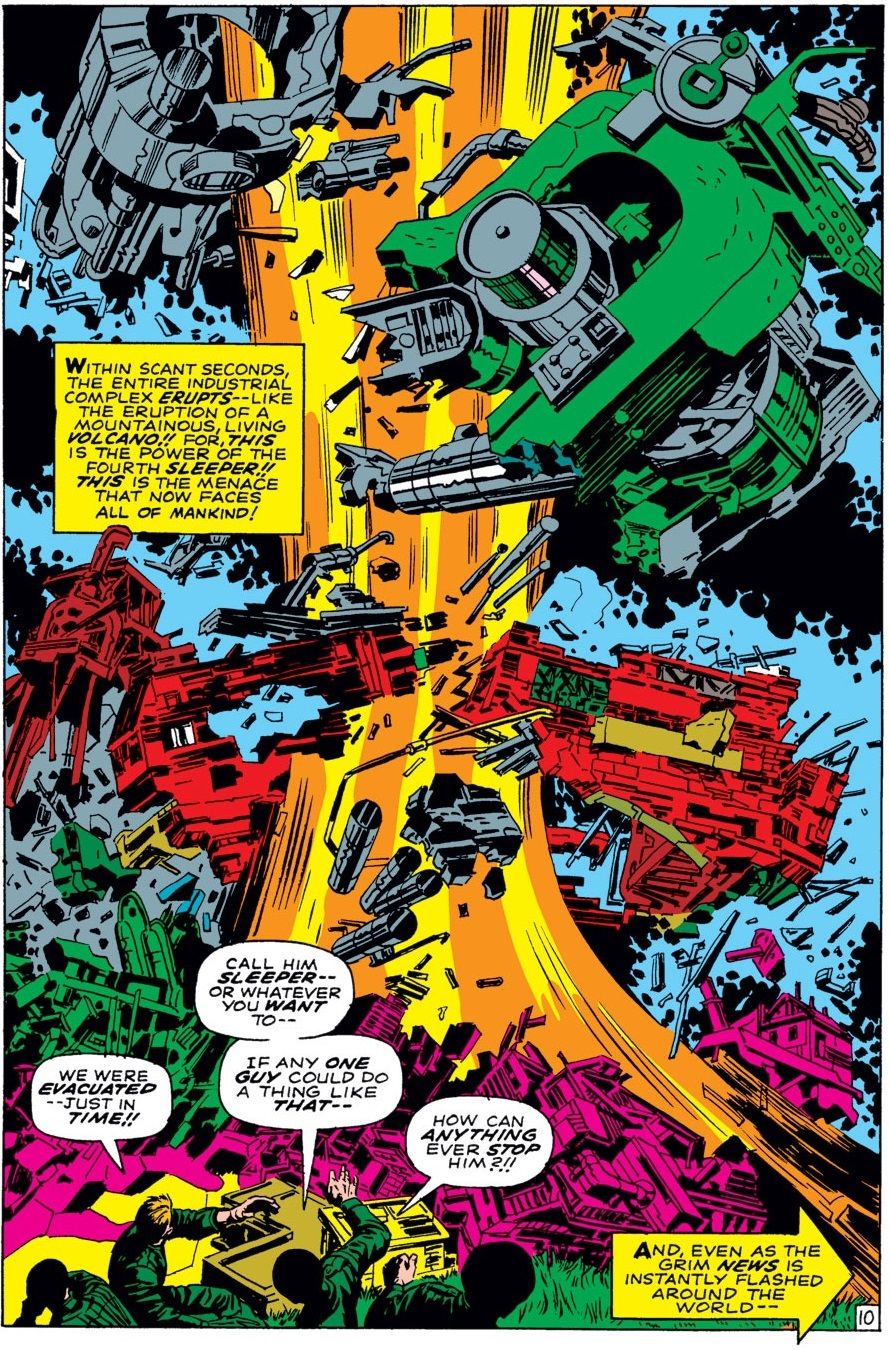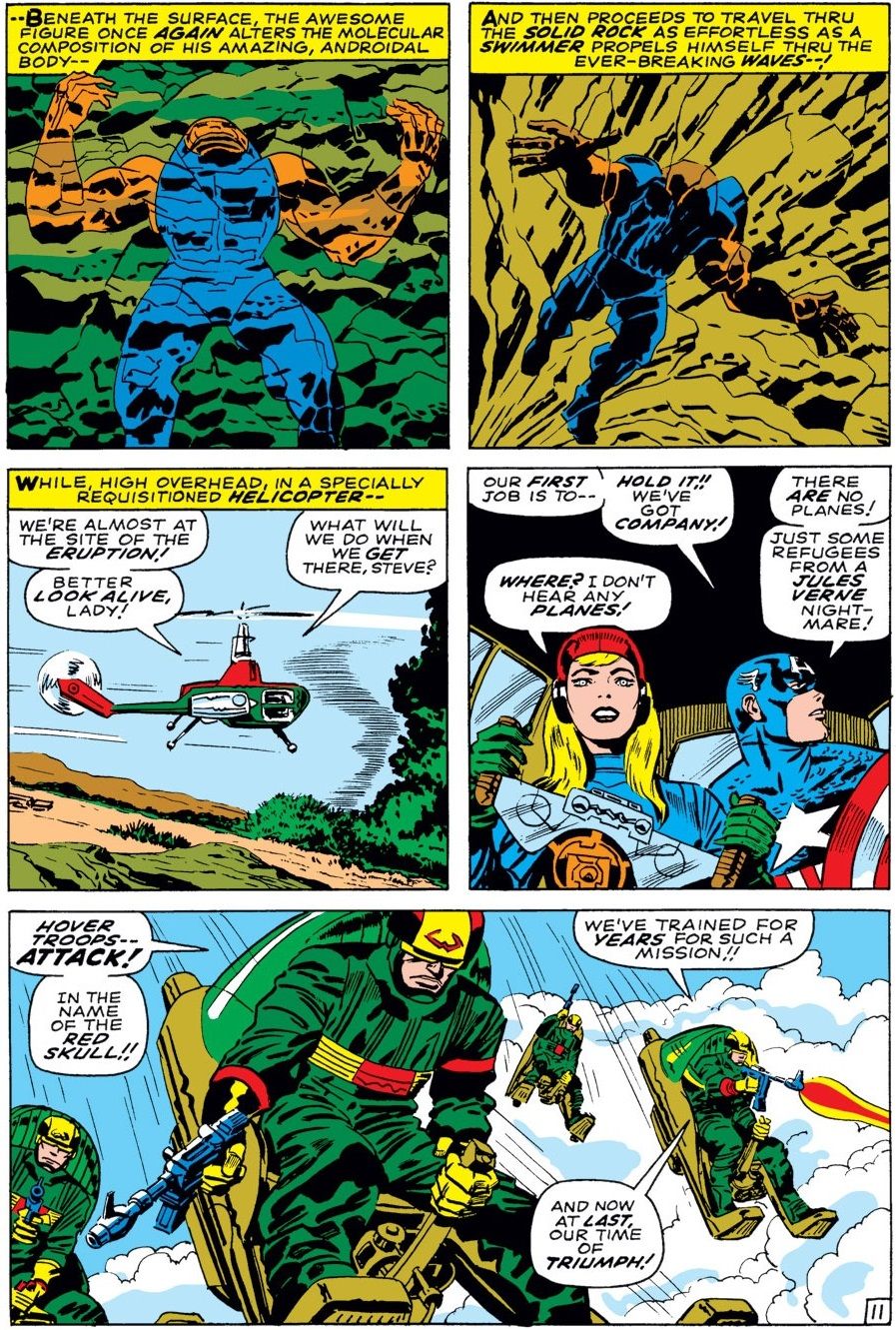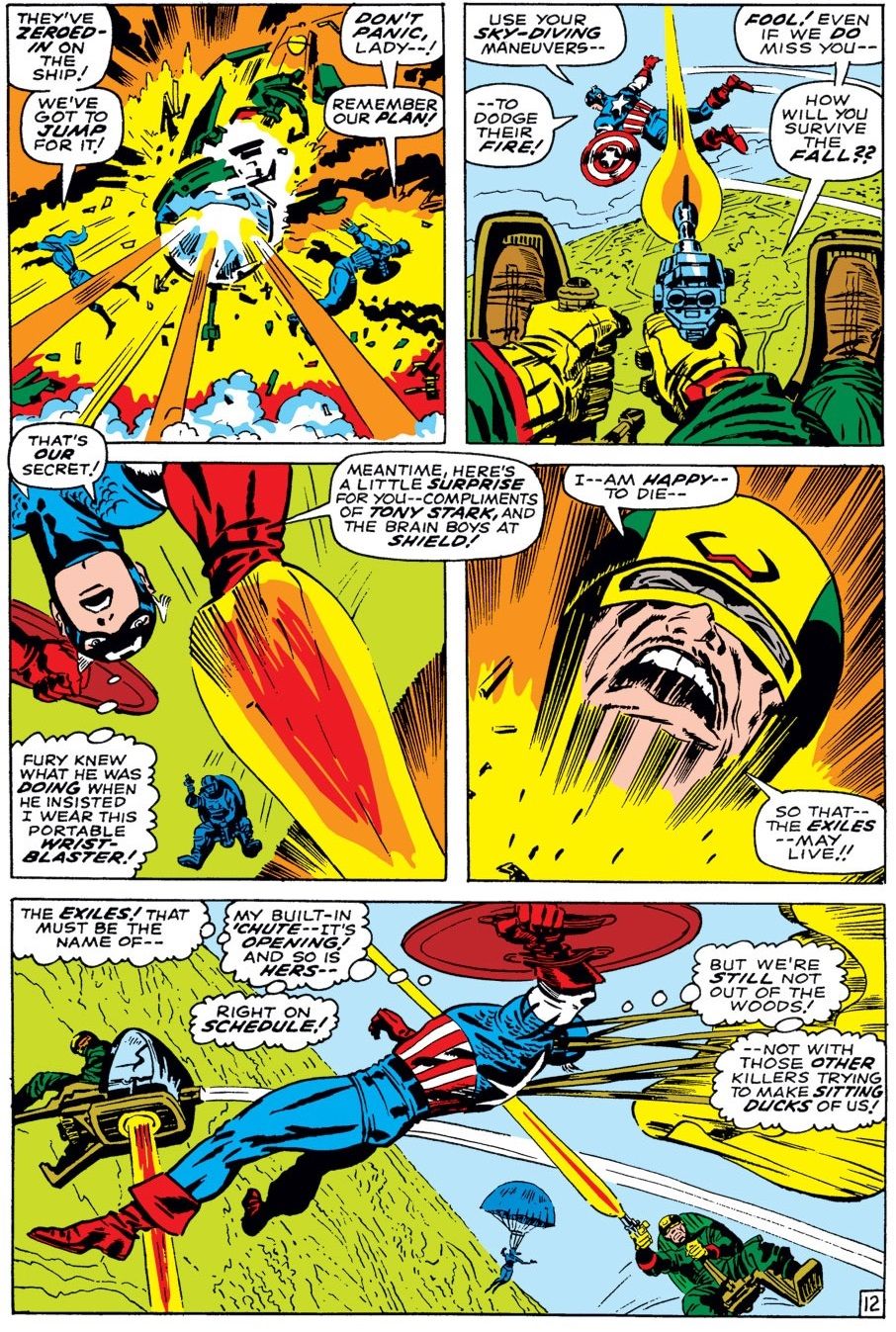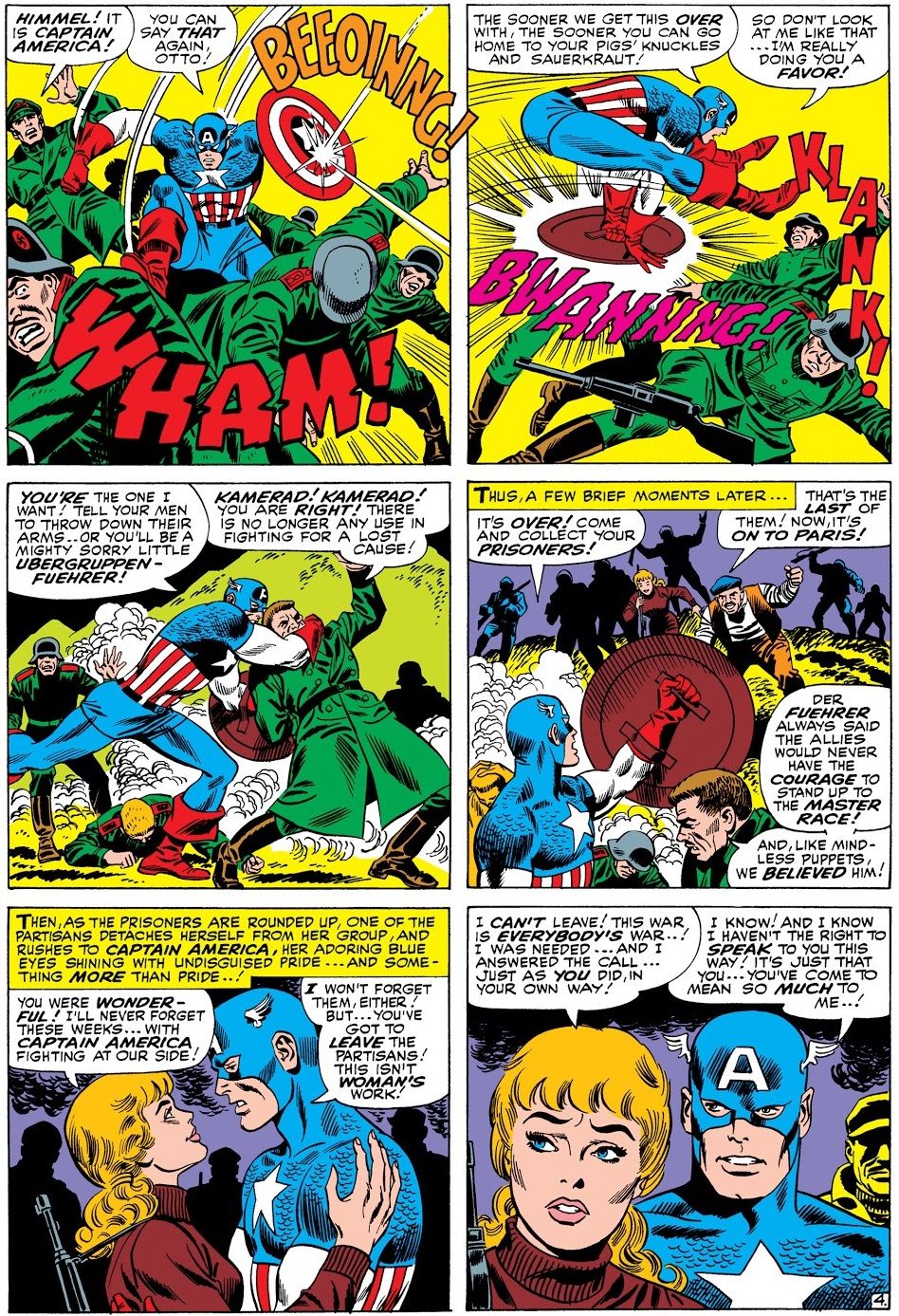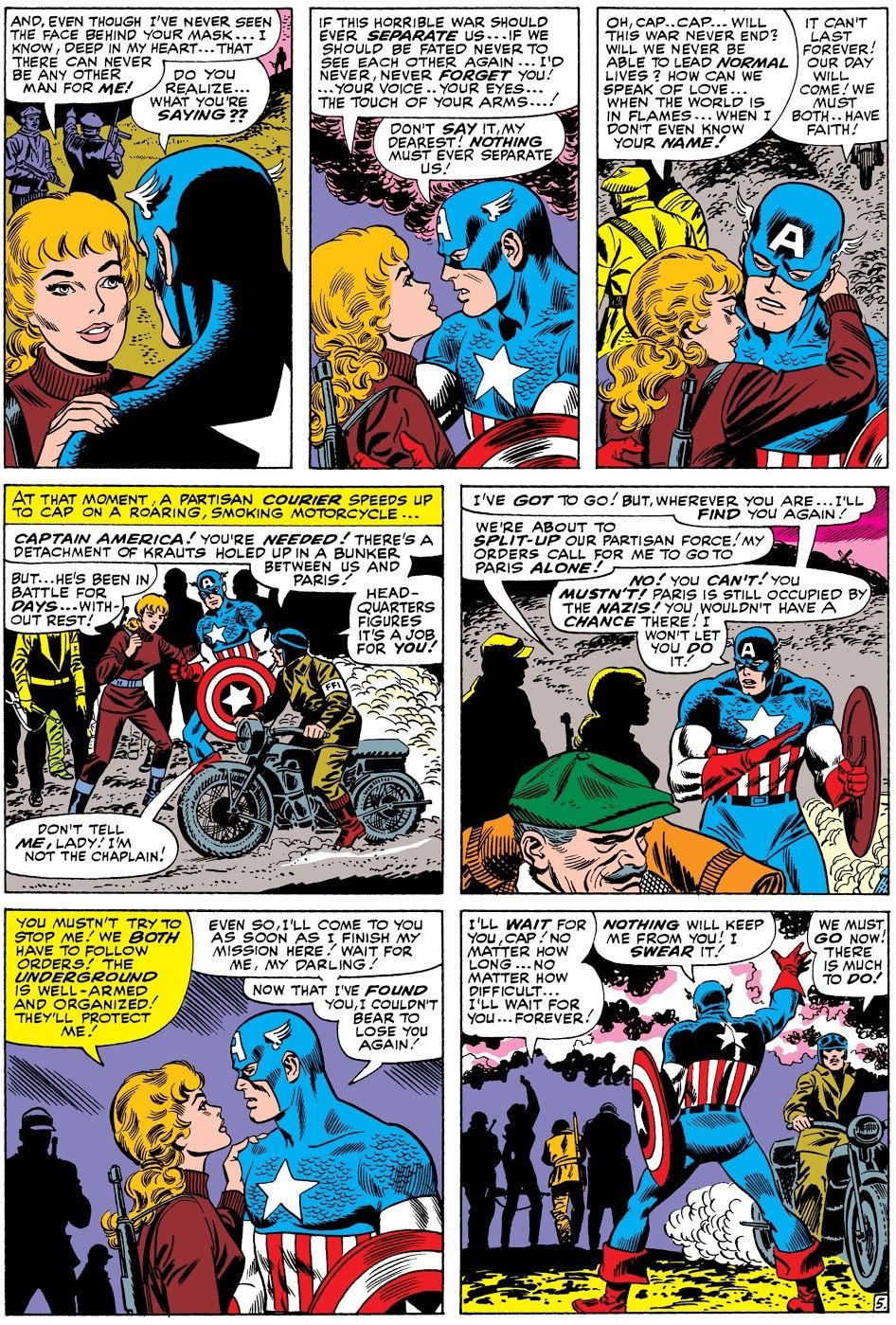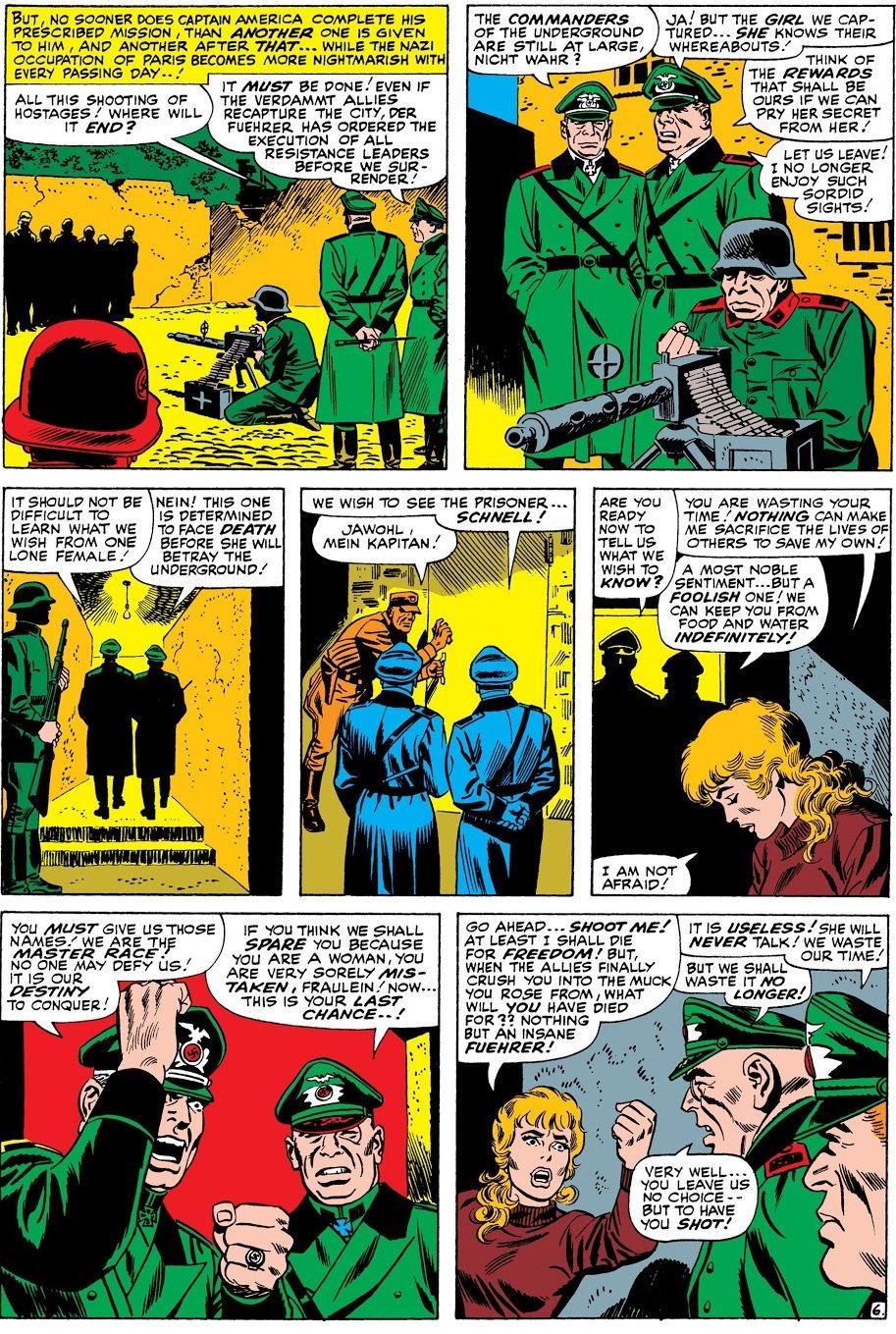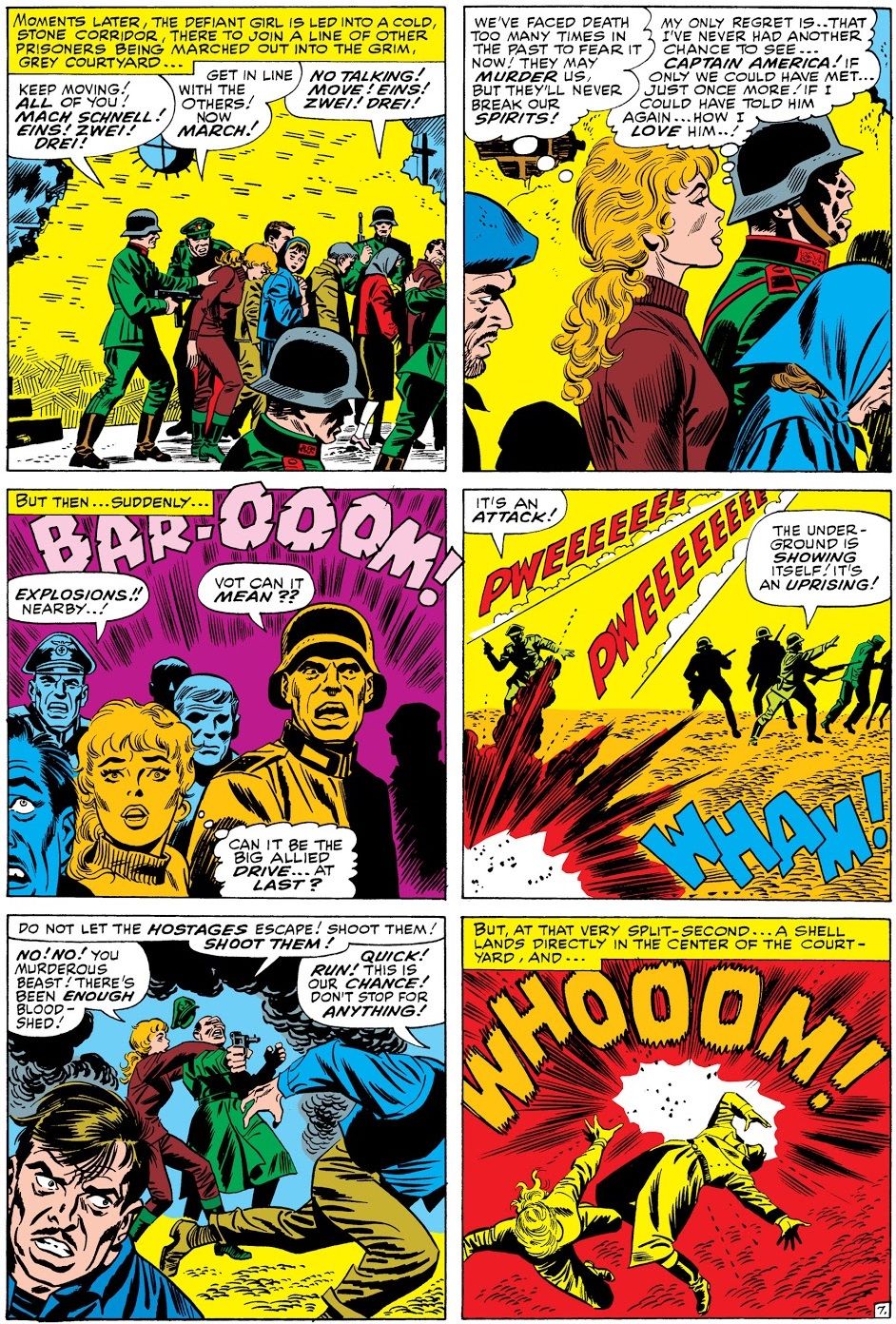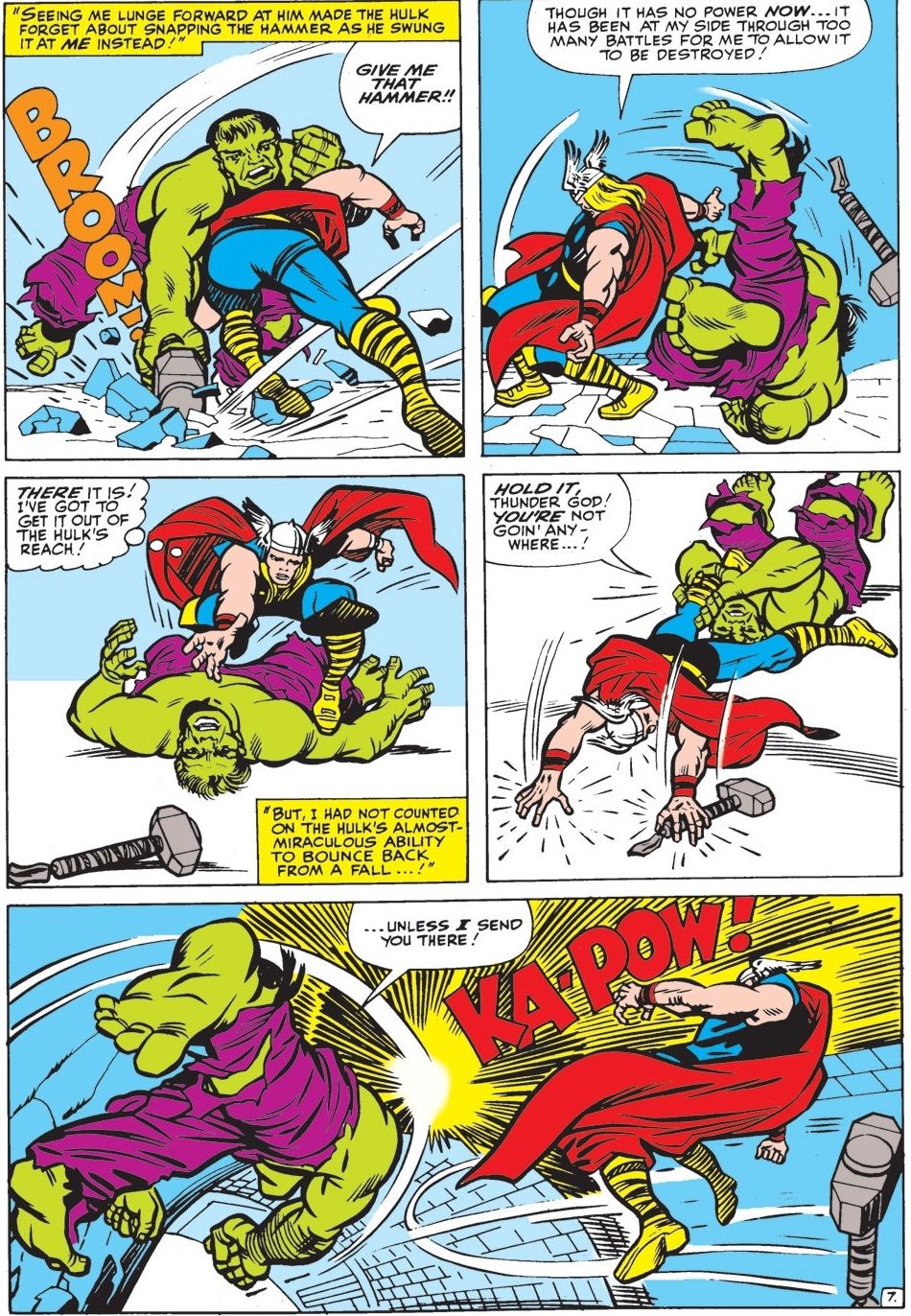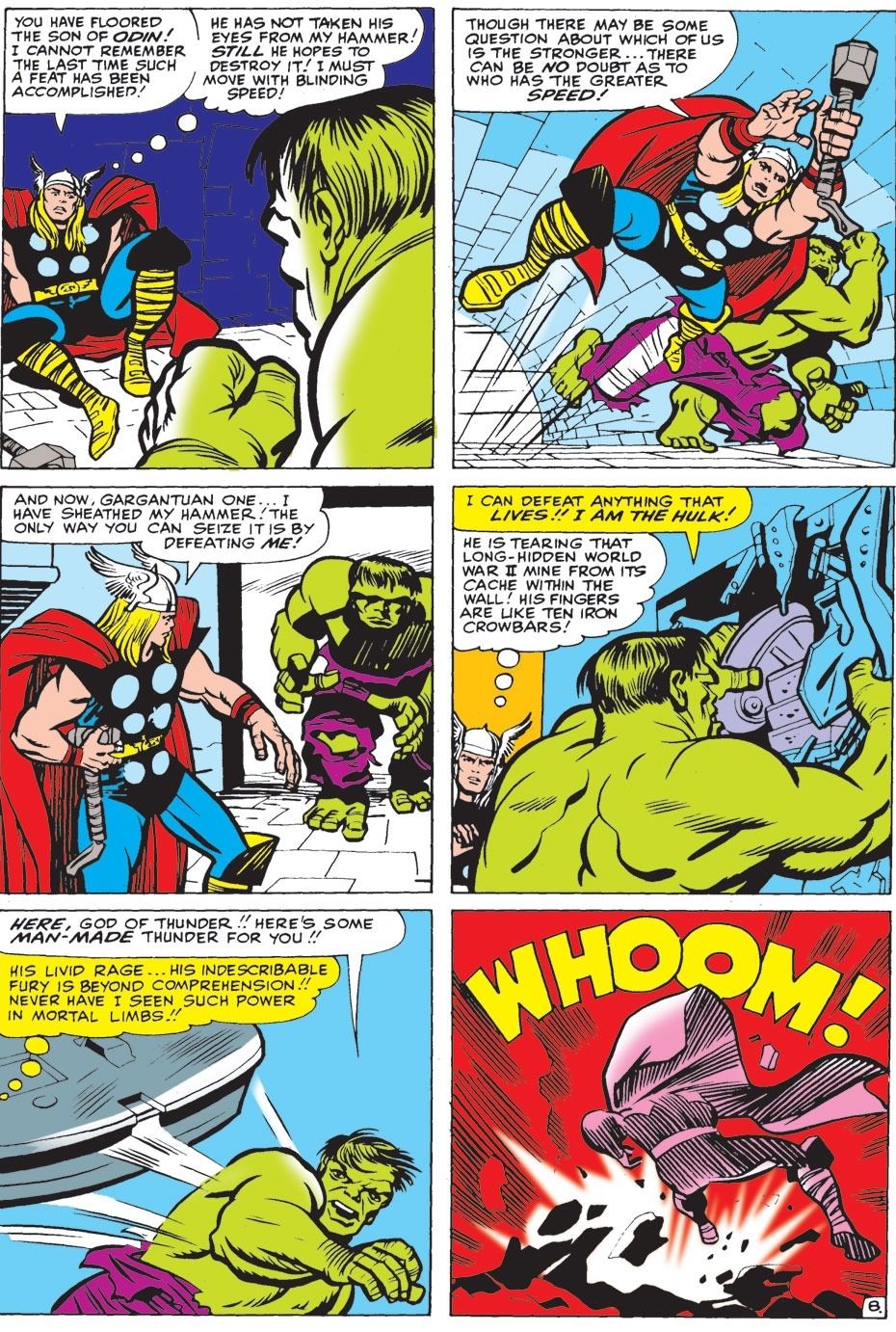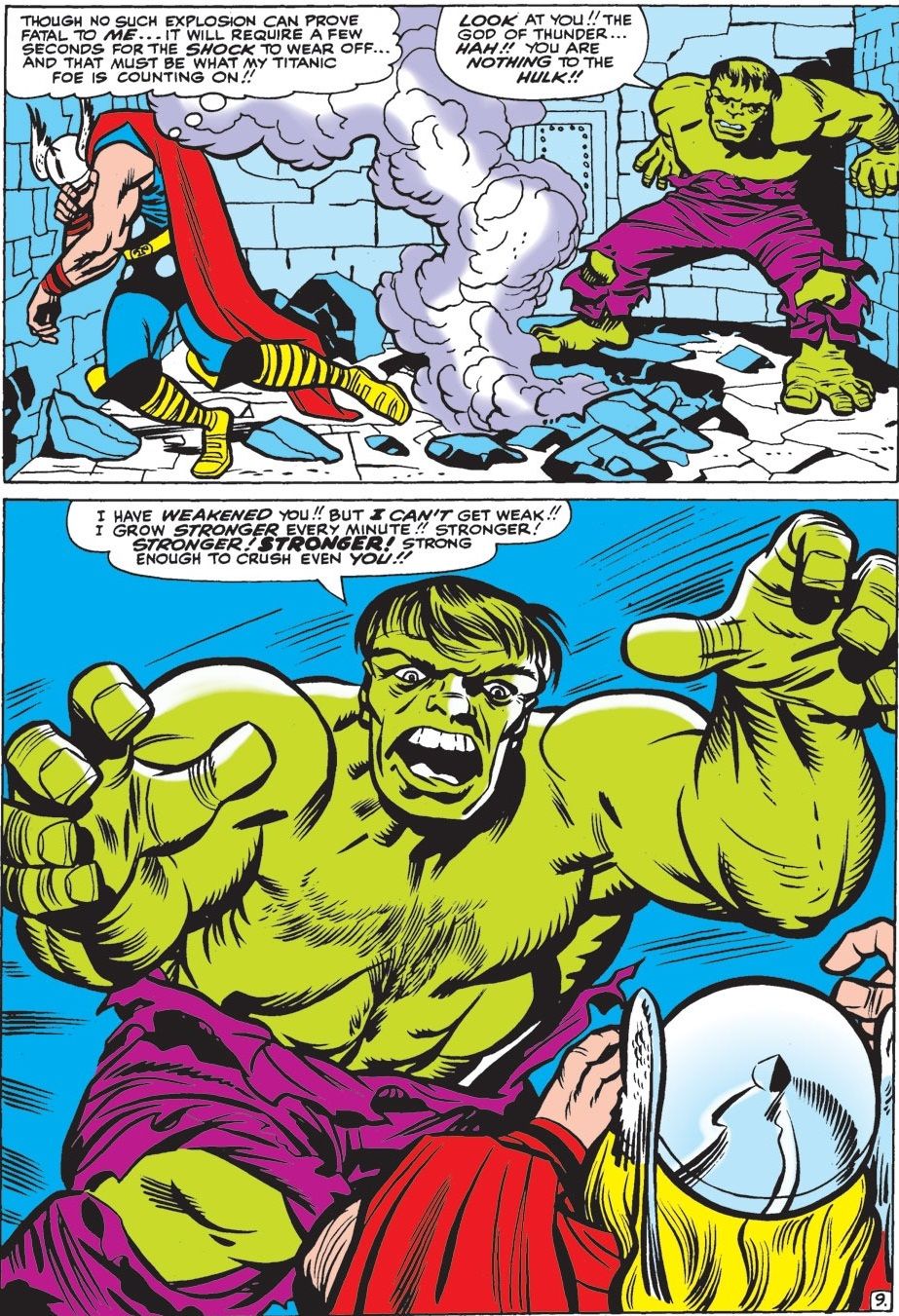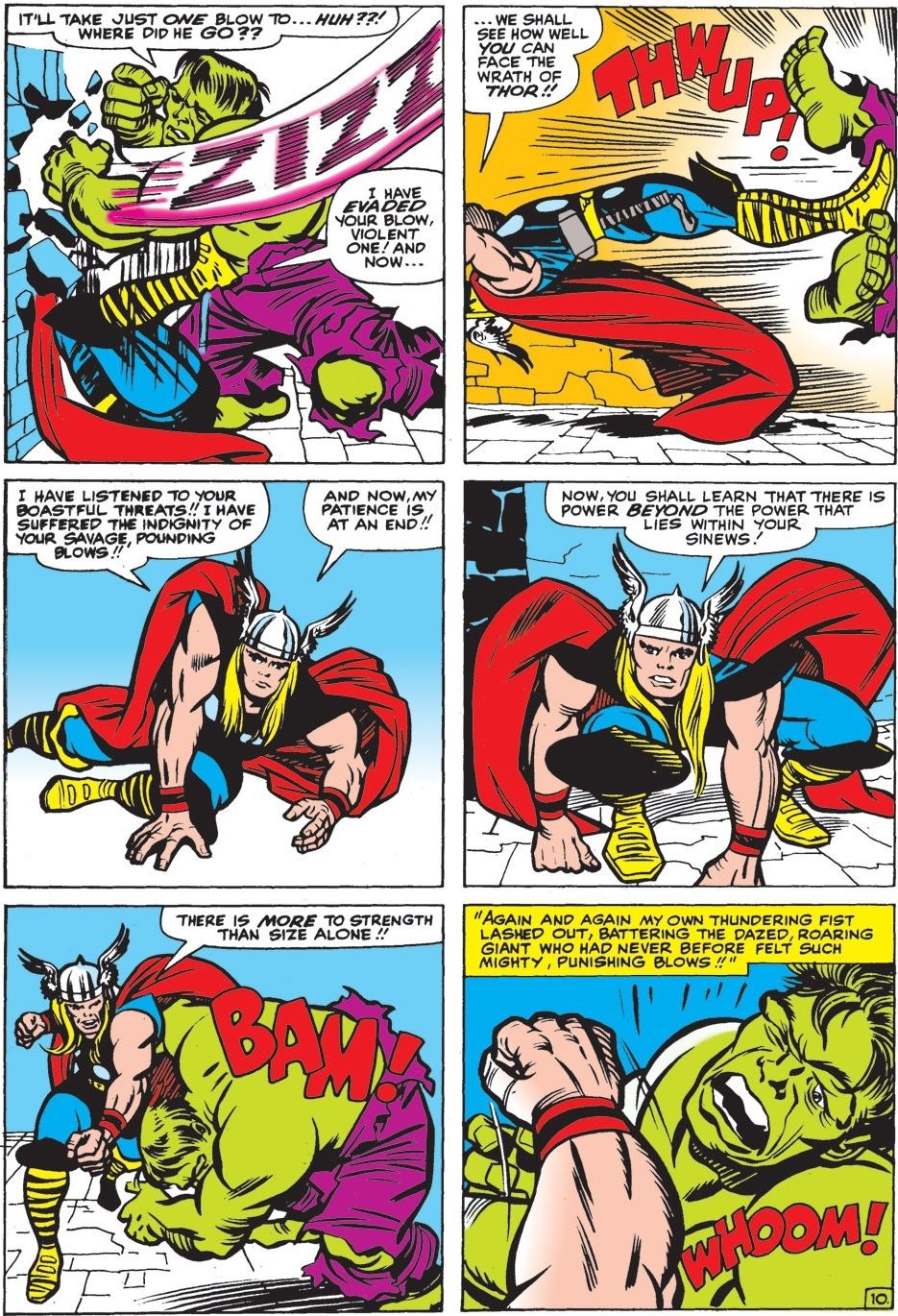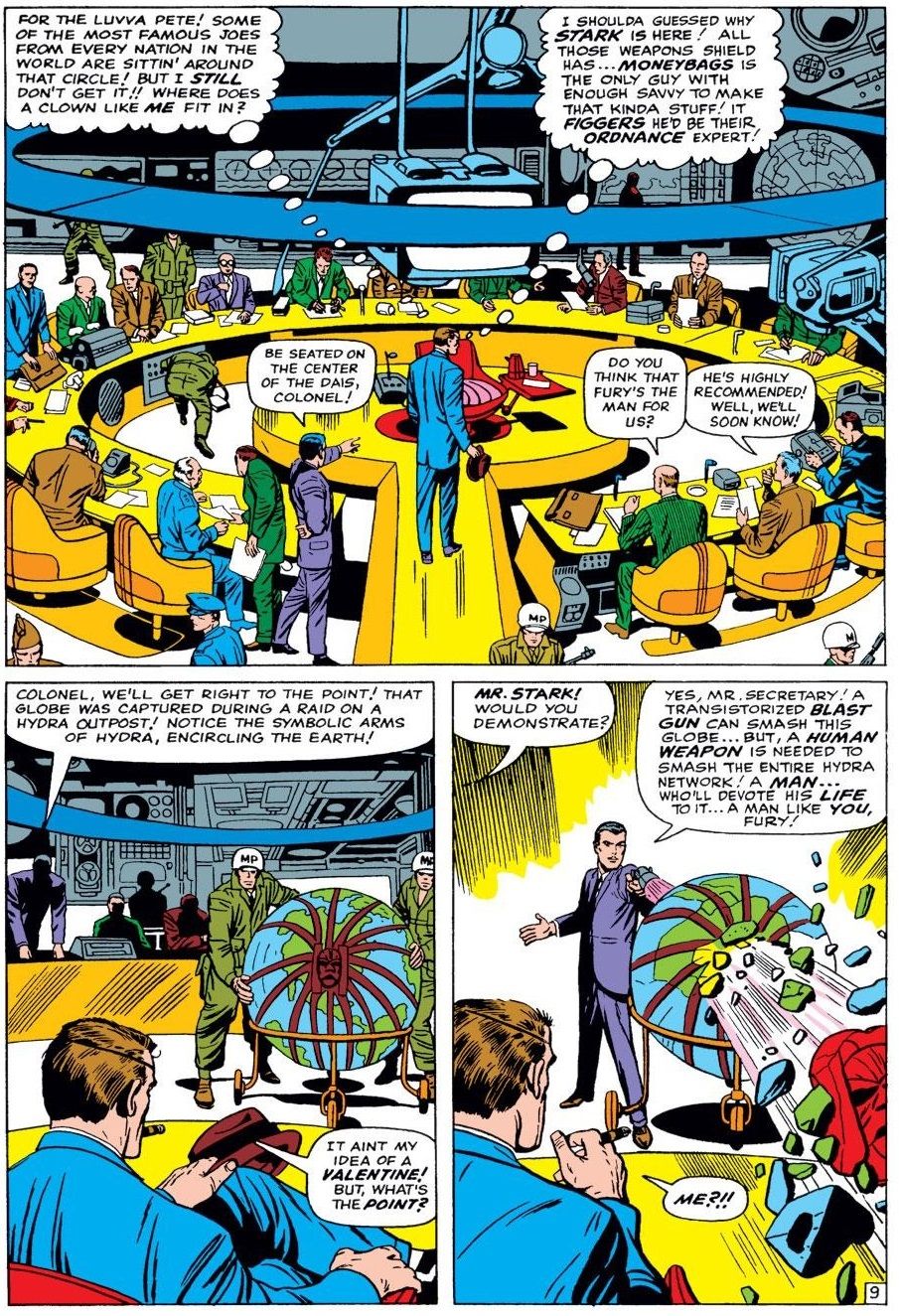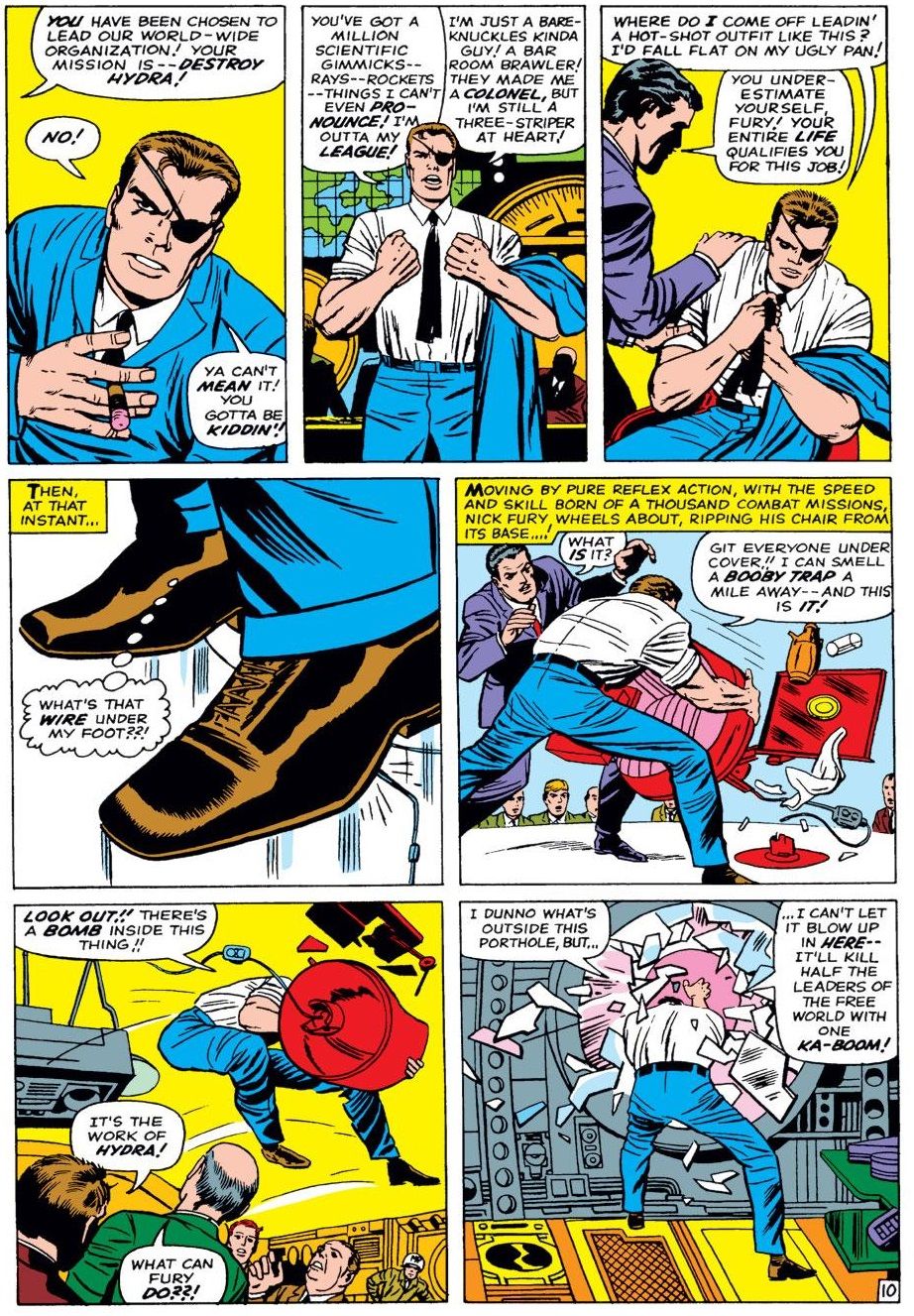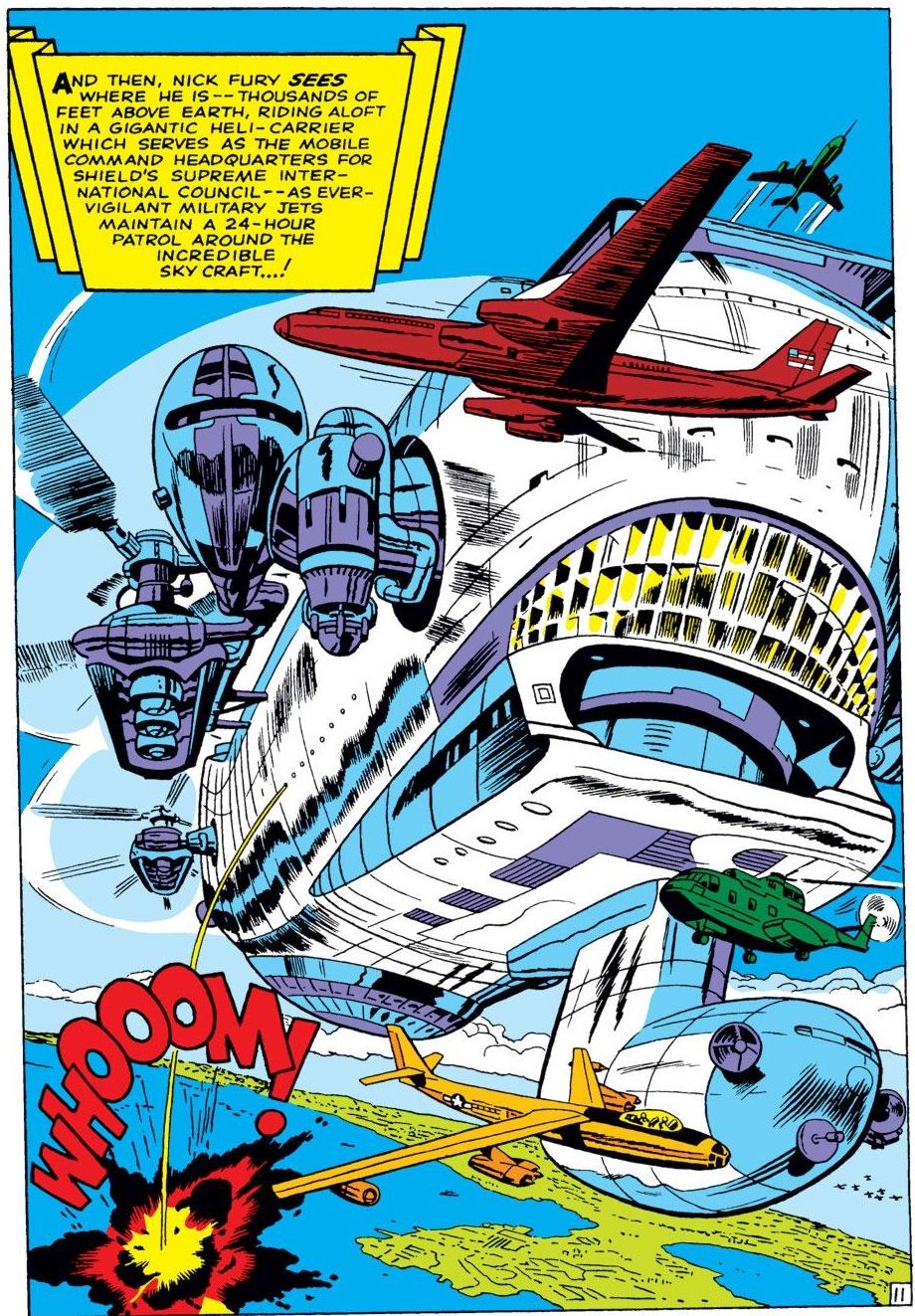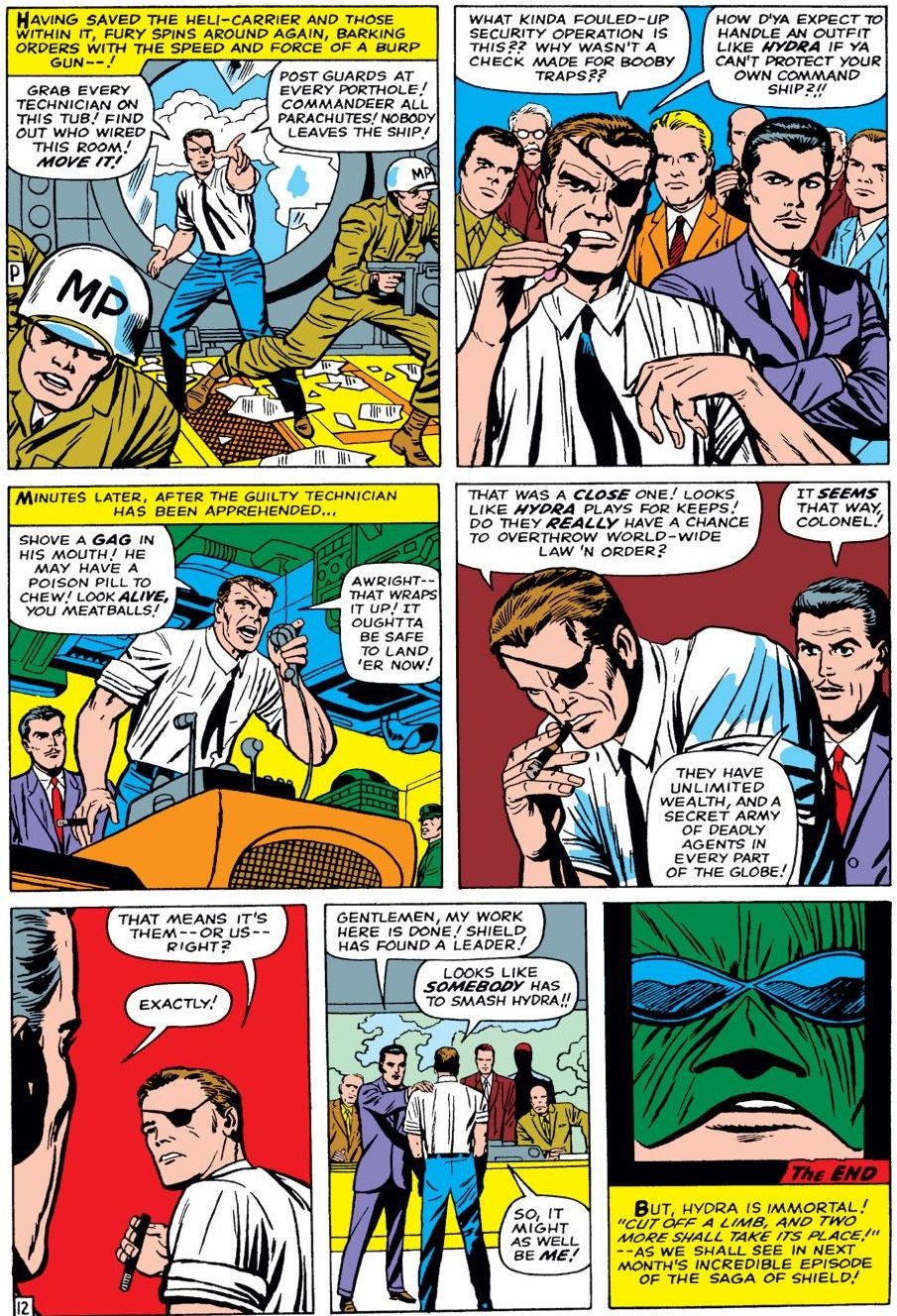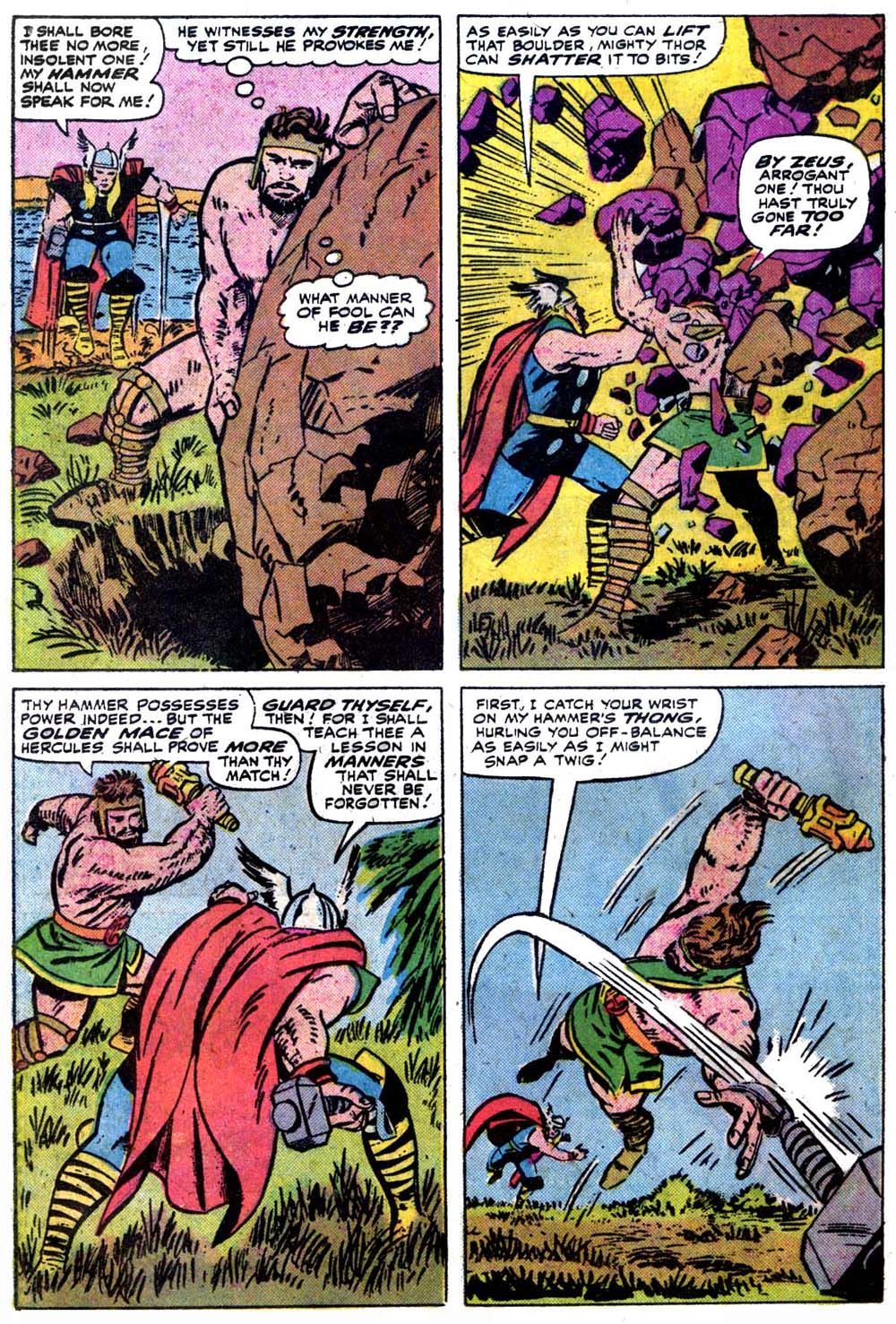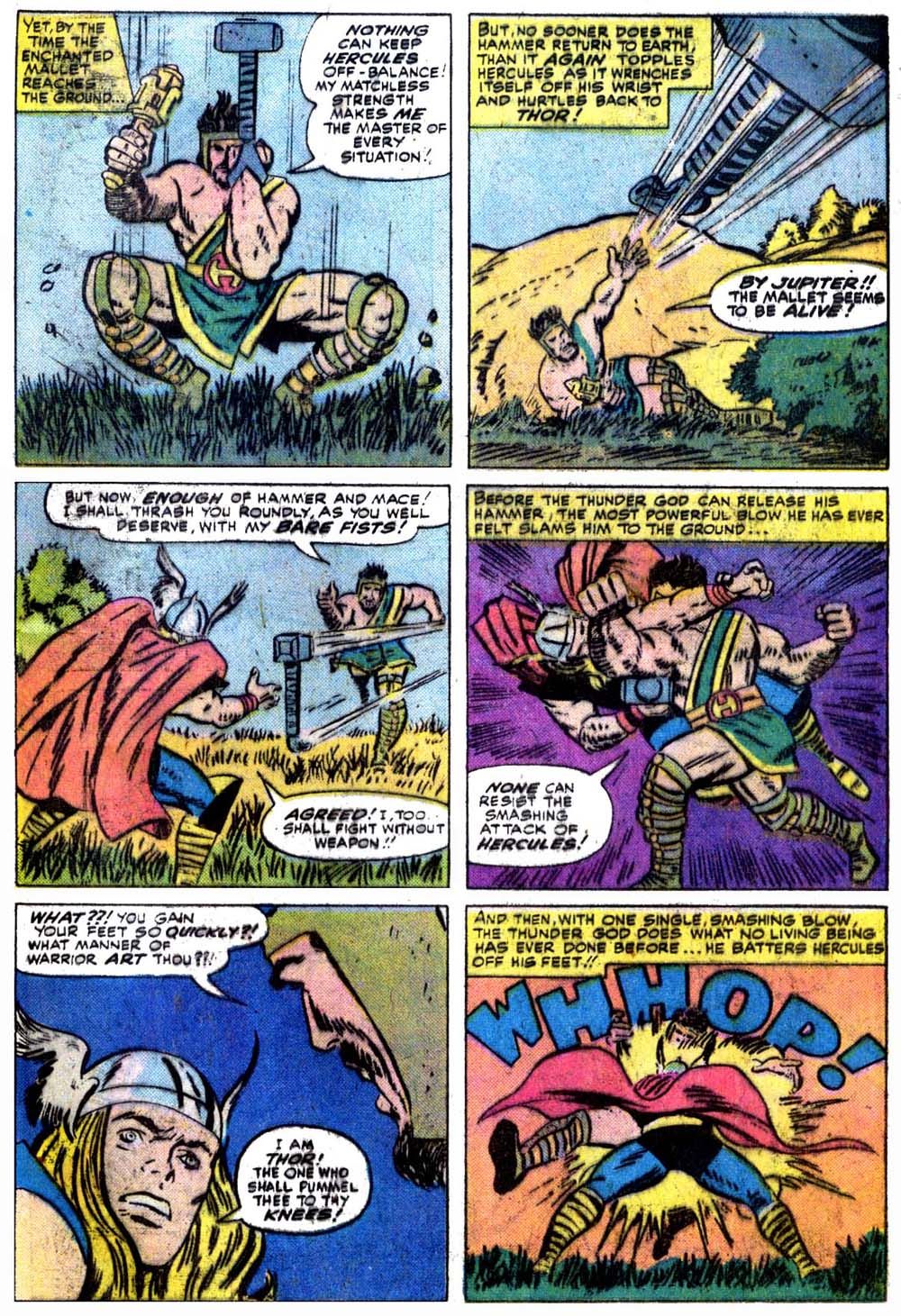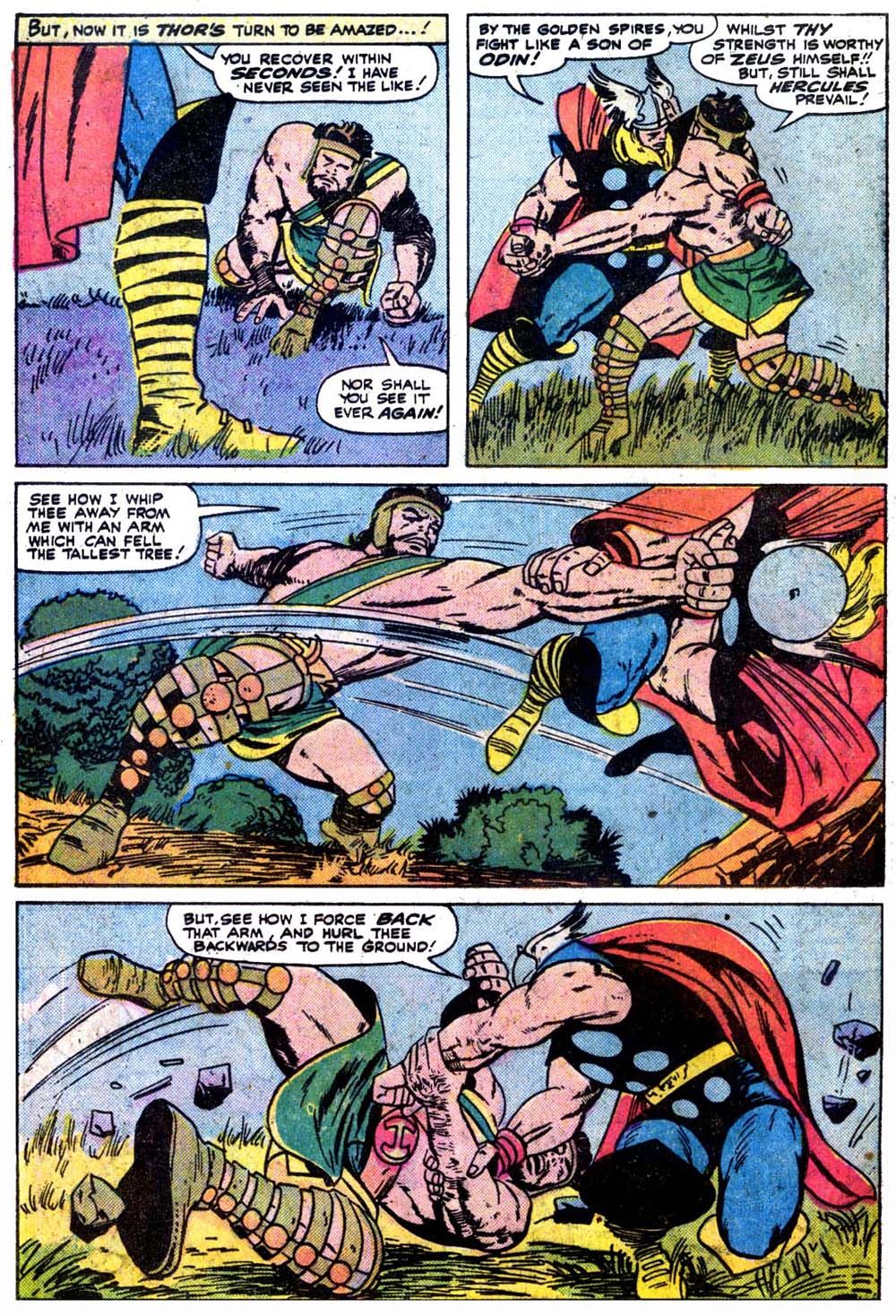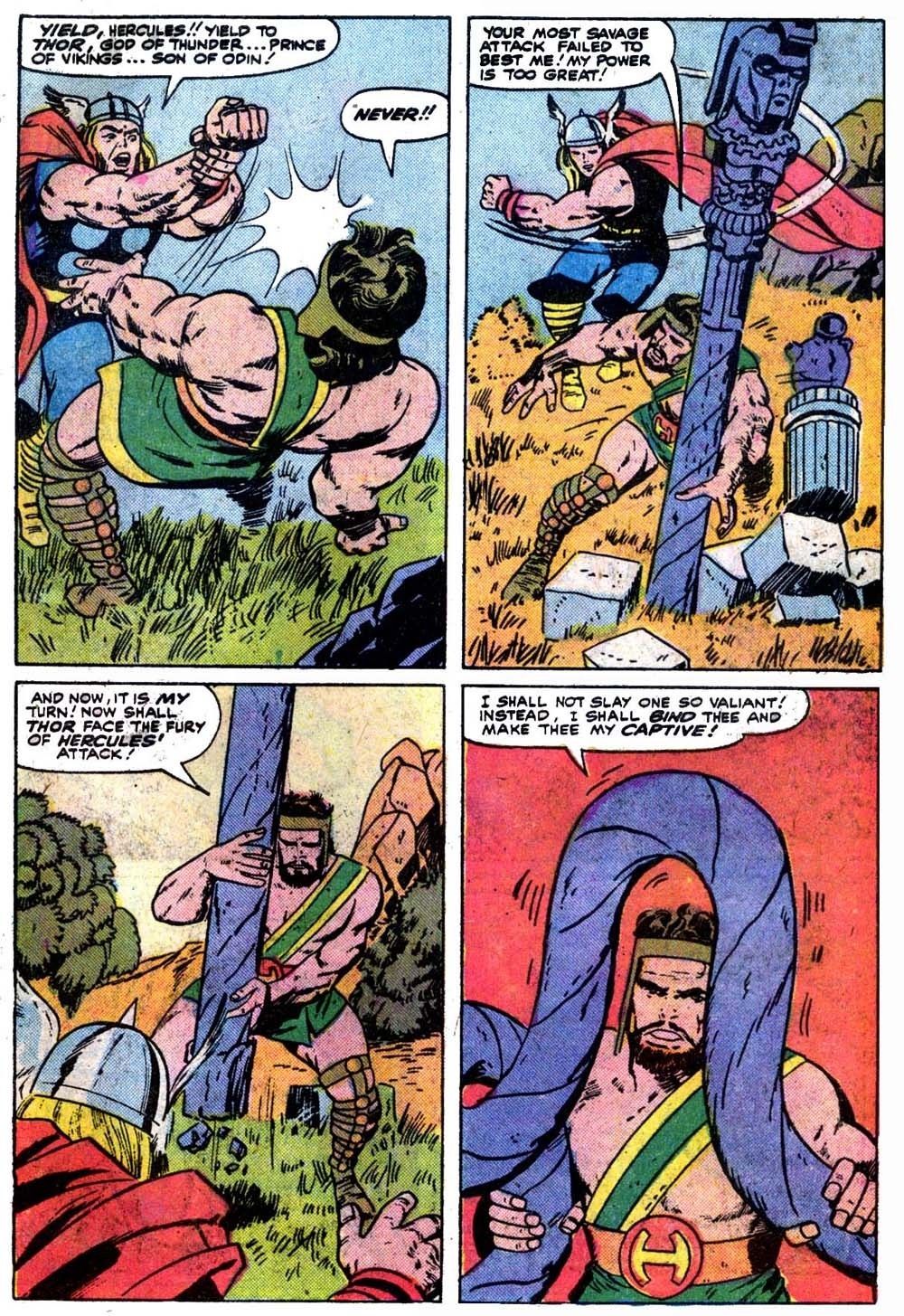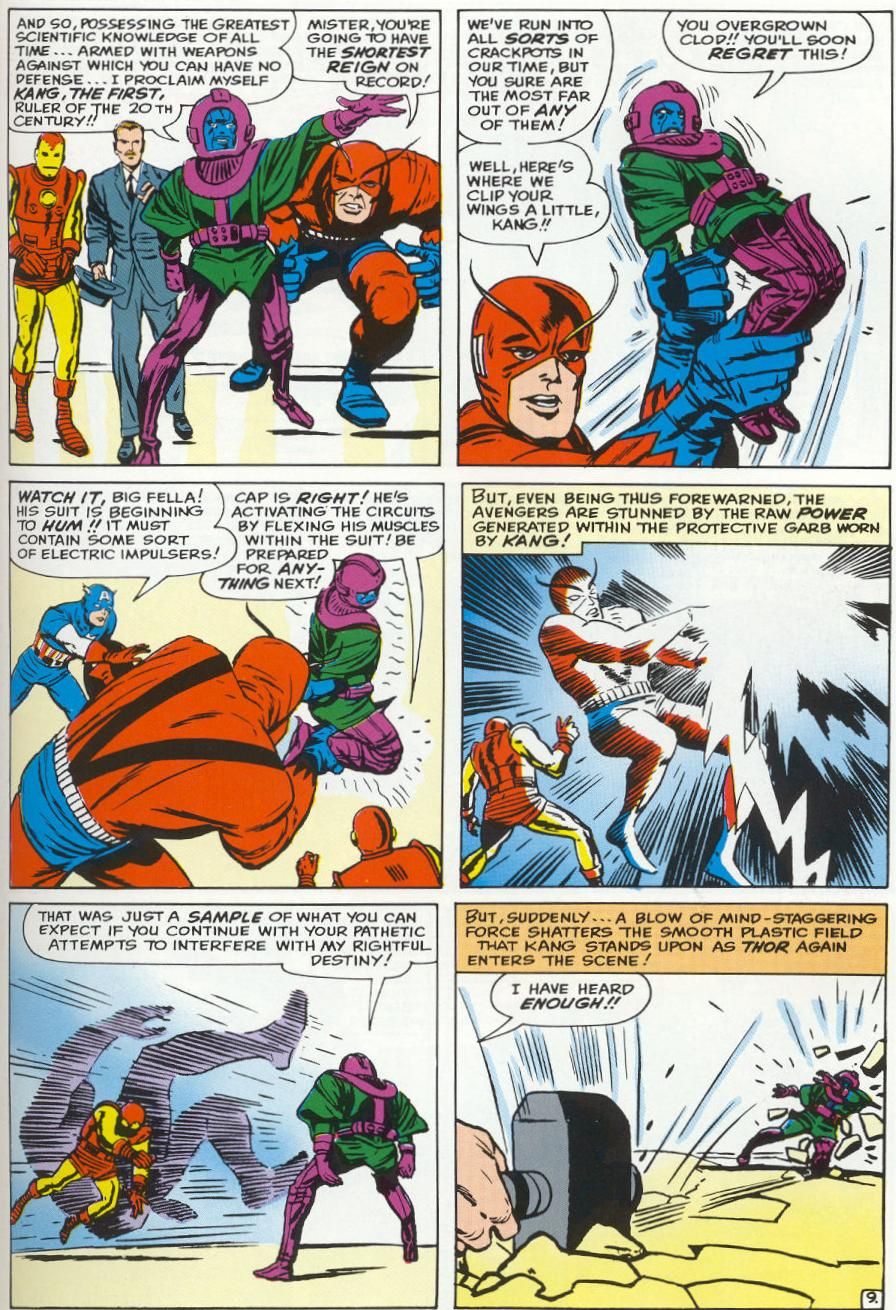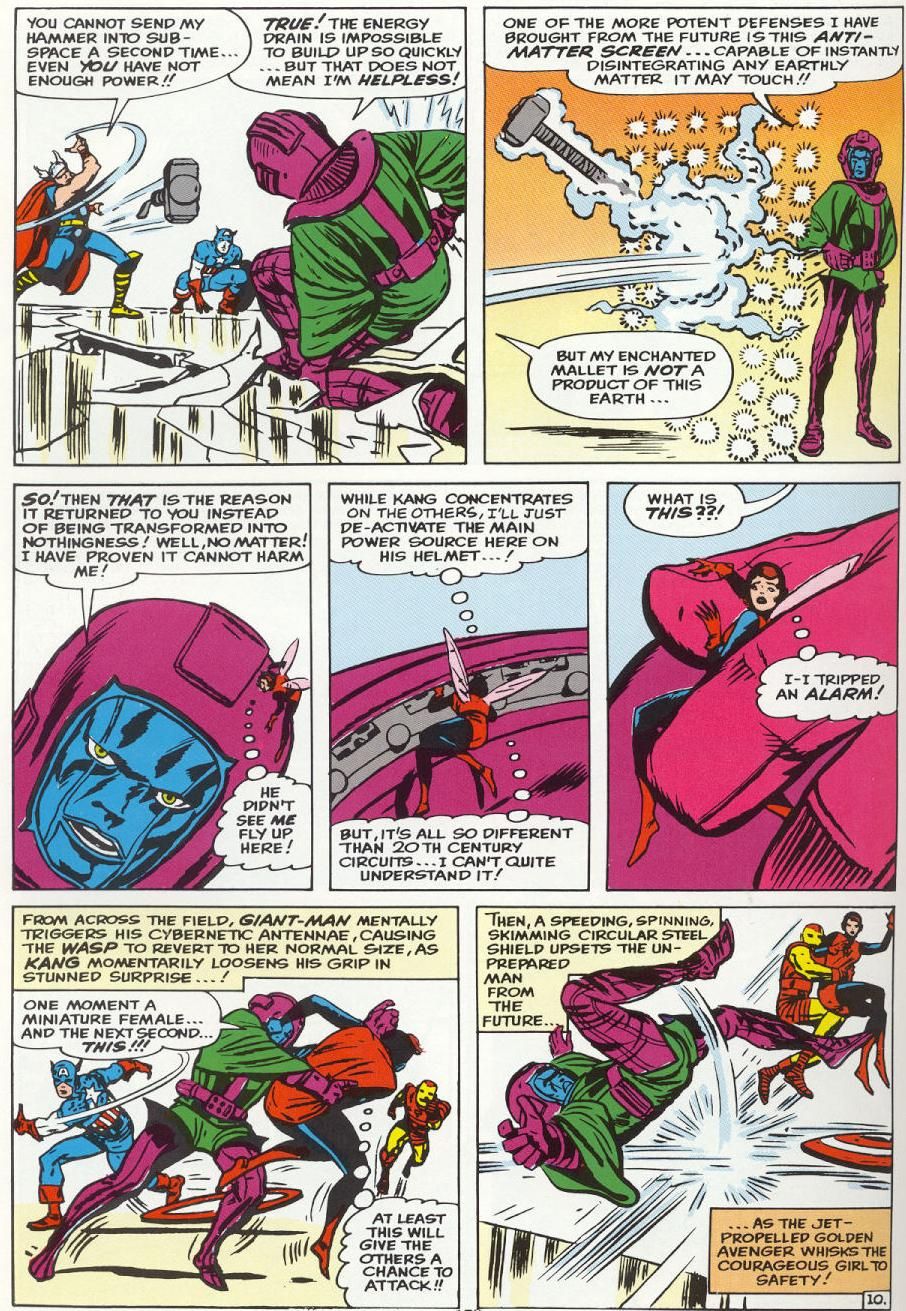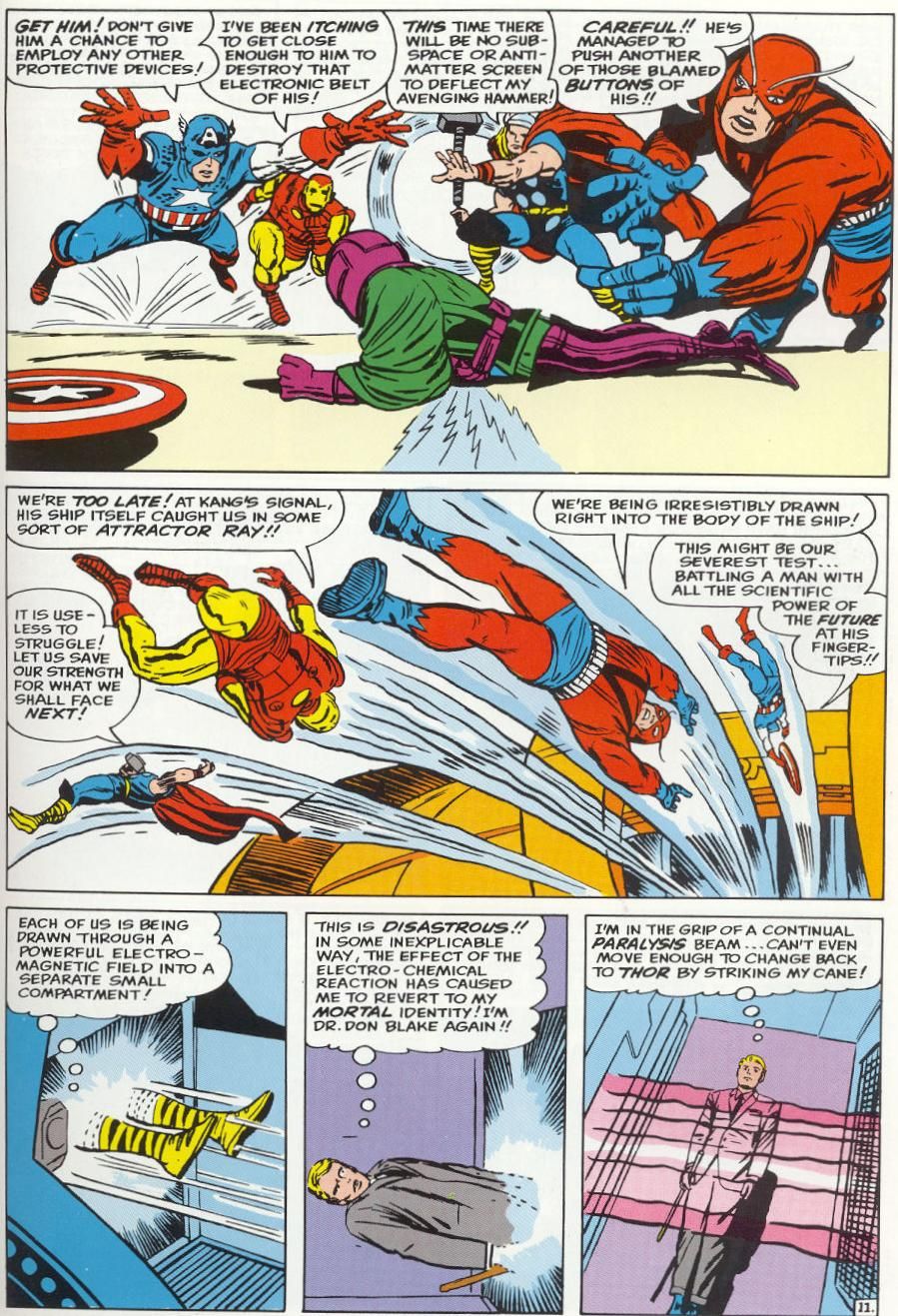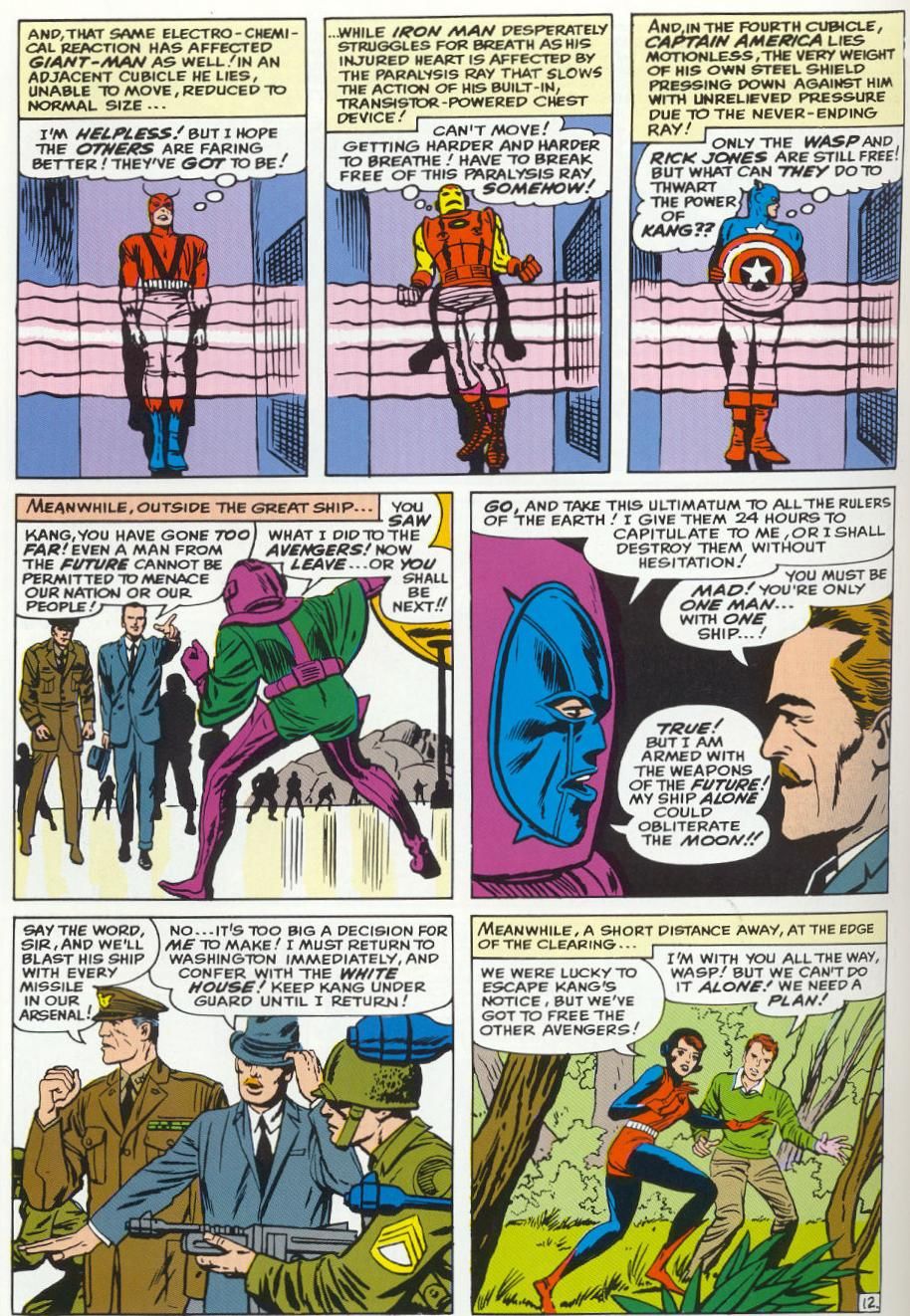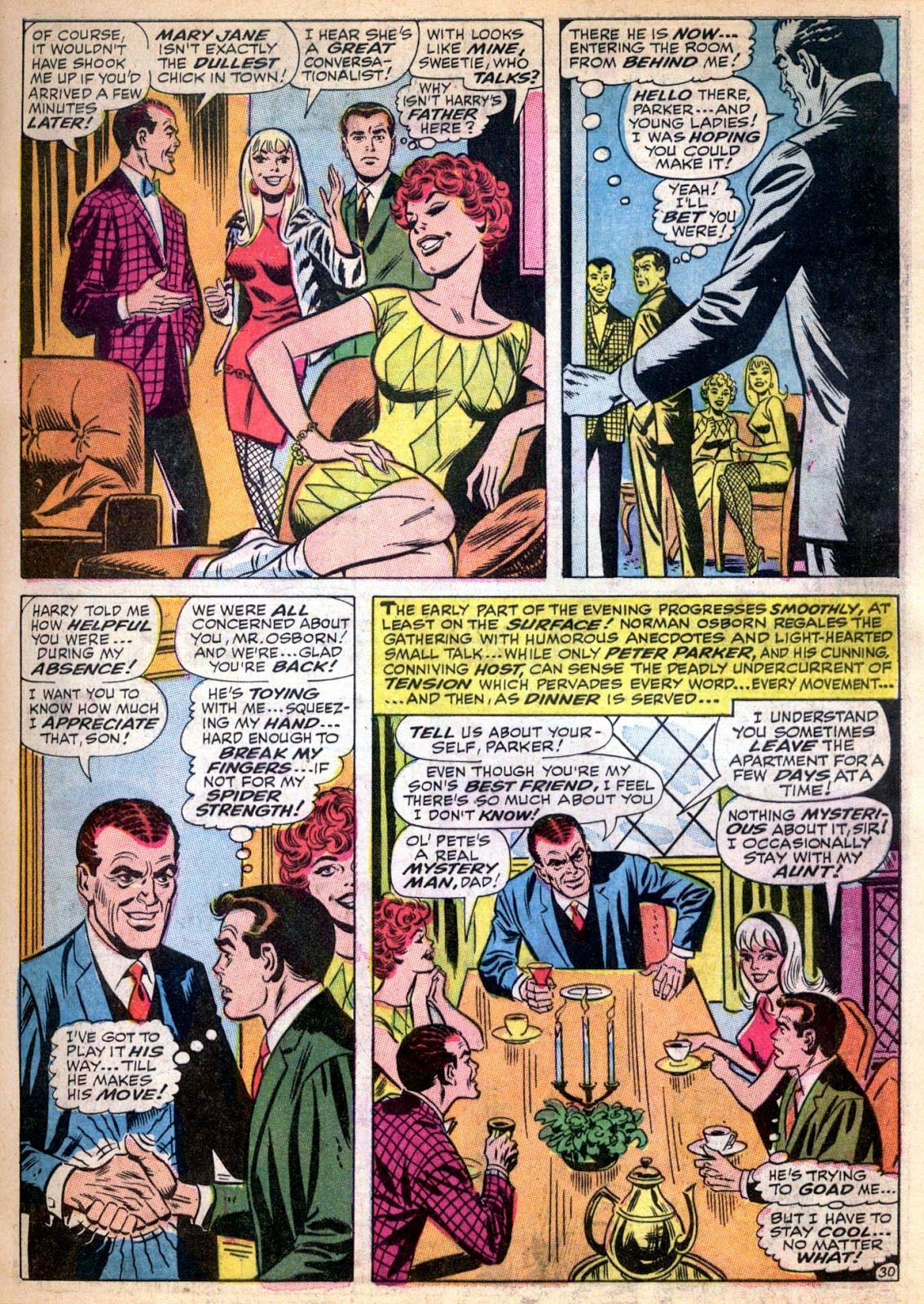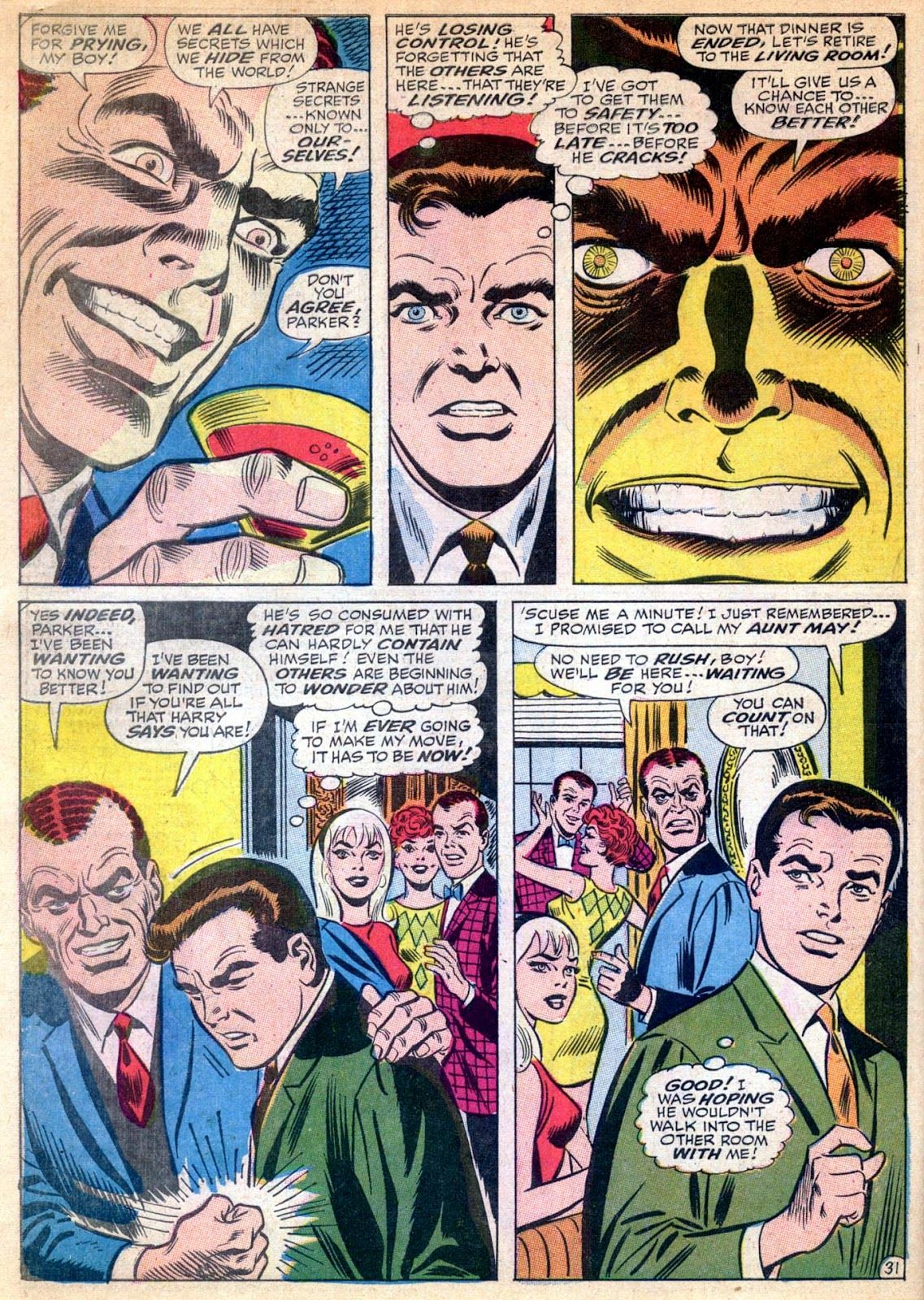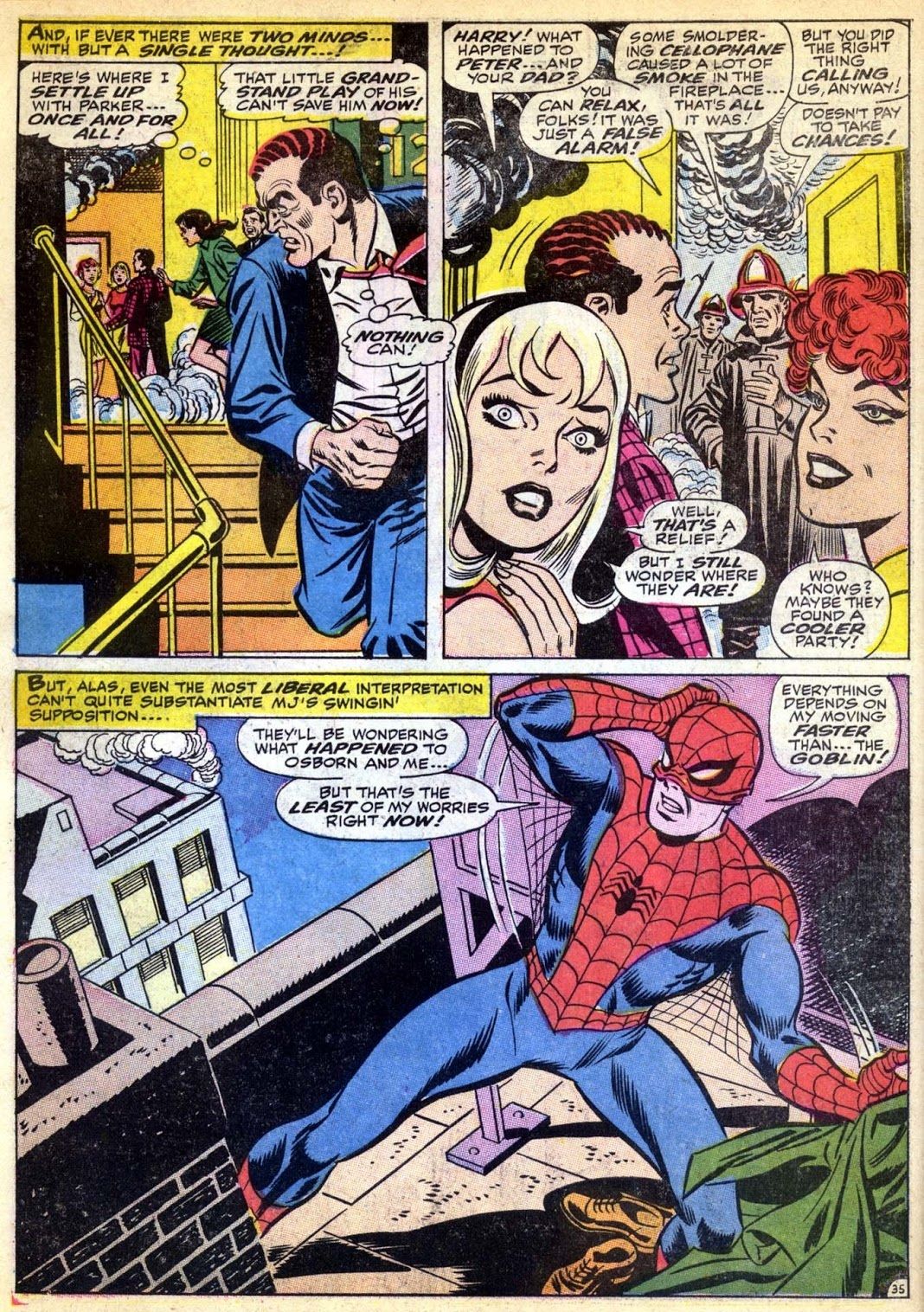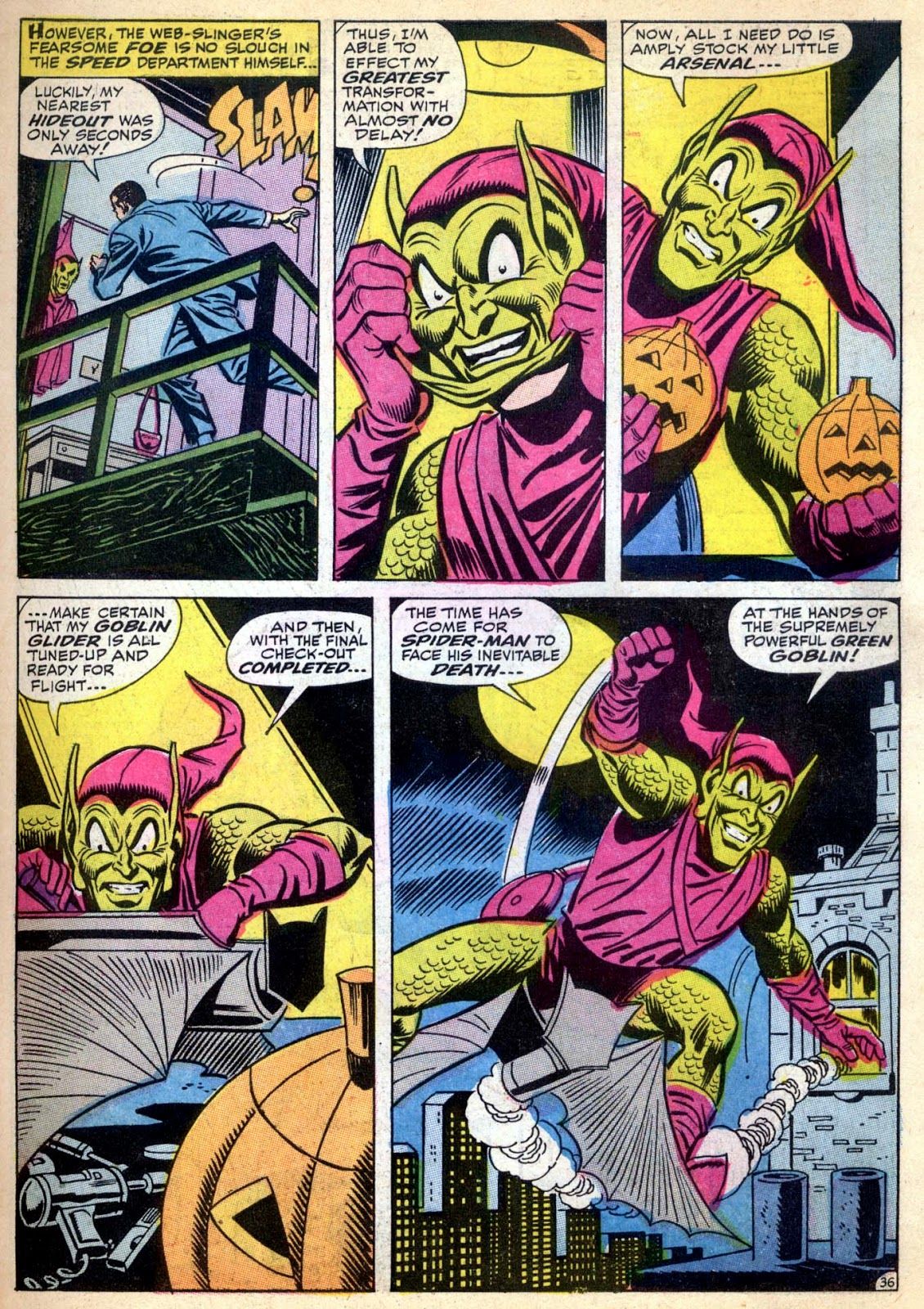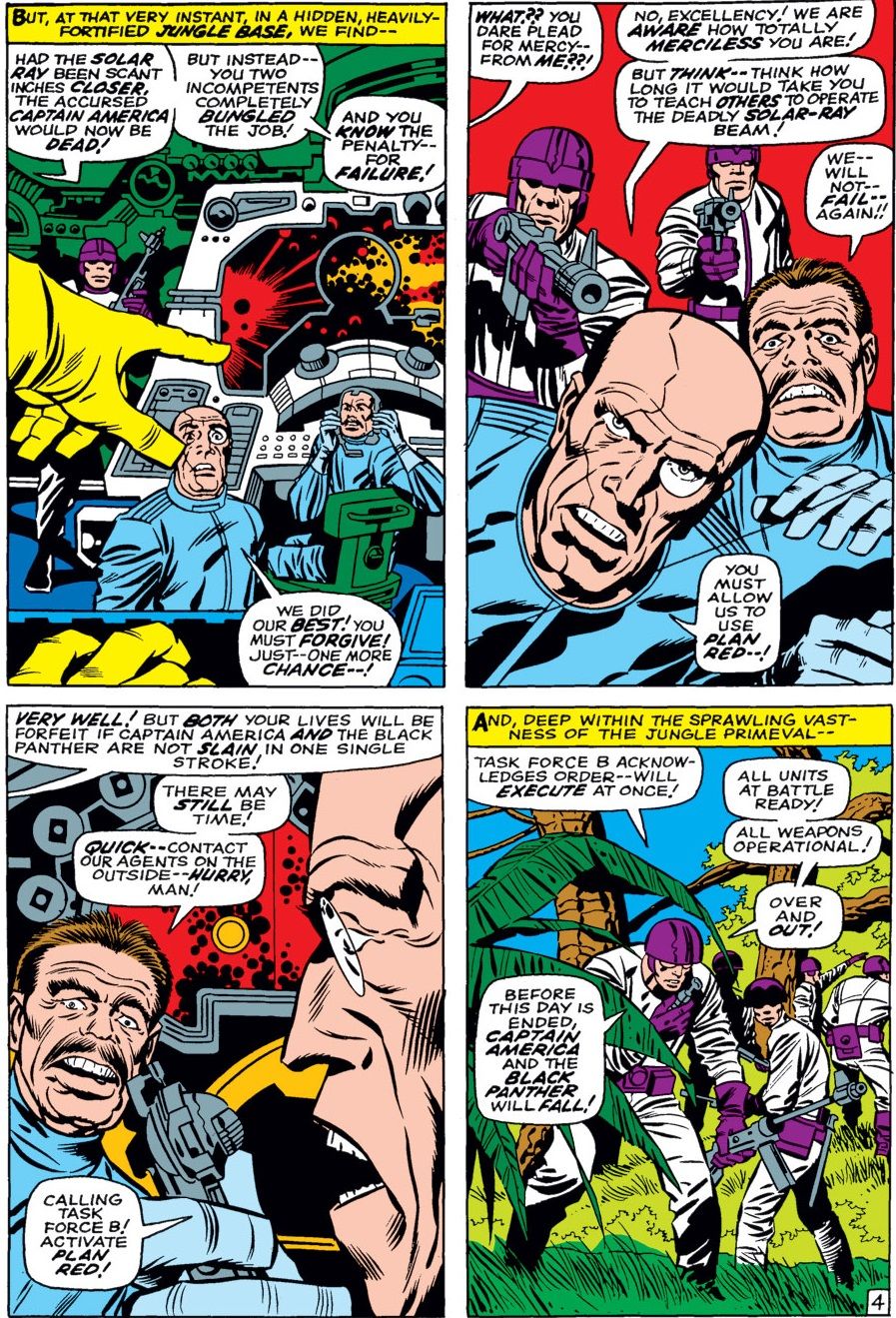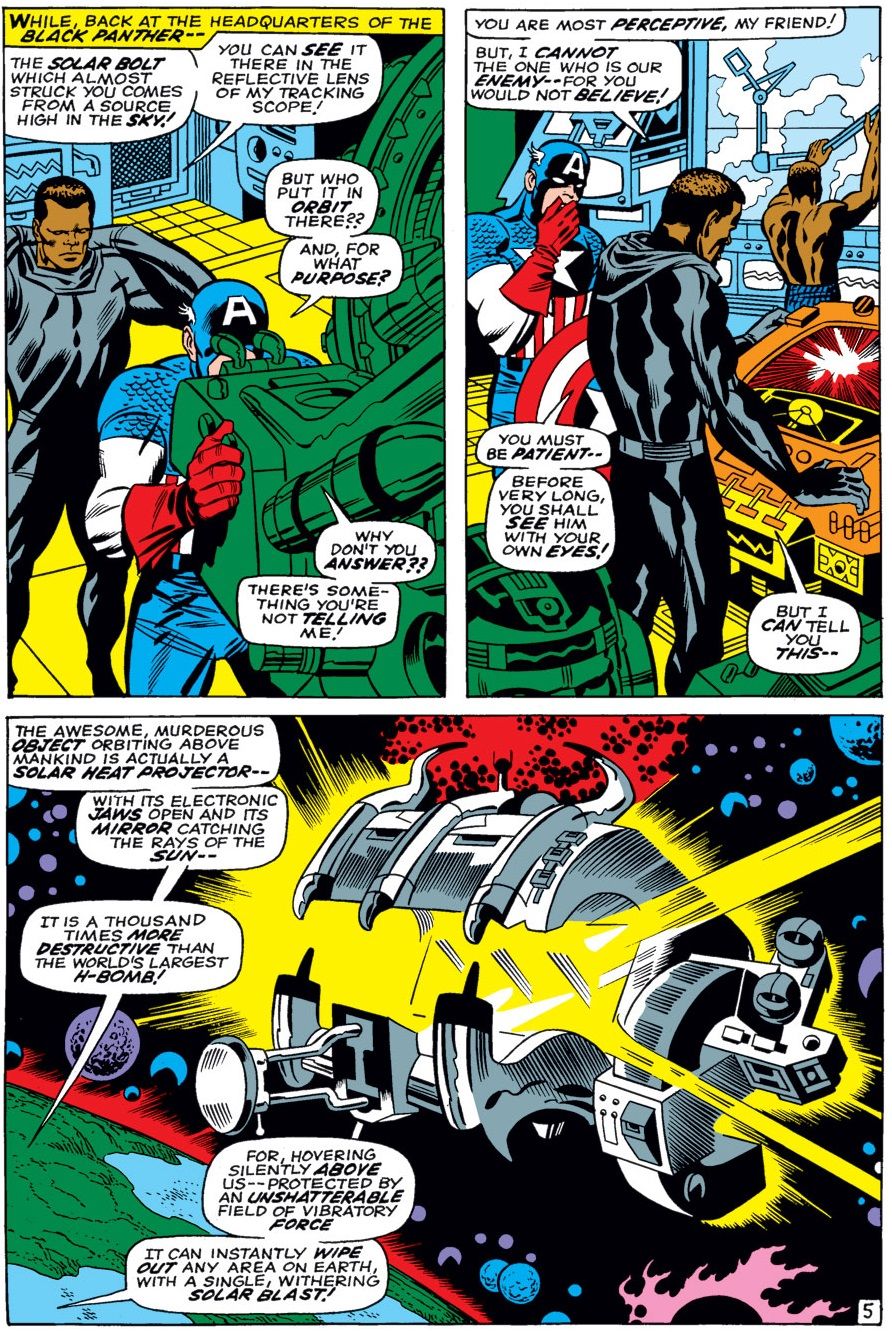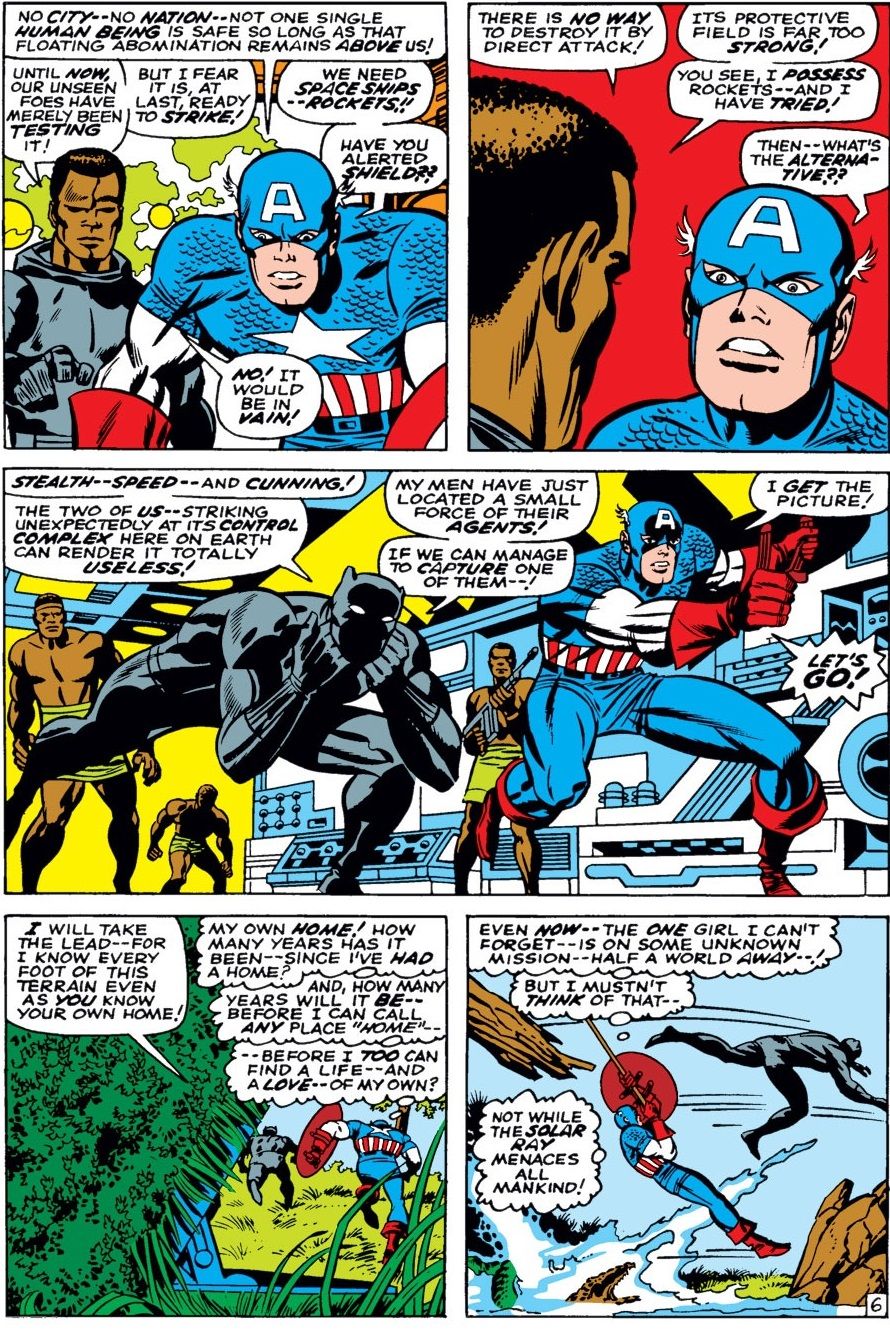Earlier this month, Stan Lee passed away at the age of 95. Lee was likely the most famous comic book creator in the history of the medium and he was the Editor-in-Chief for Marvel Comics for a remarkable three decades stint from the Golden Age through the launch of the Marvel Age of Comics. Working with iconic creators like Jack Kirby, Steve Ditko, John Romita, Joe Maneely, John Buscema, Don Heck, Wallace Wood, Dick Ayers, Gene Colan and many more, Lee either co-plotted and scripted or simply scripted some of the most famous stories in the history of comics. We asked you to vote for your picks for the top comic book stories that Lee either scripted or co-plotted and scripted. Here are the results!
70."Hulk Versus the Leader" Tales to Astonish #62-74 (1964-65)
I made a distinct point about how I didn't want people to vote for, say, a run or anything like that. You had to break it down into smaller components. However, I will admit that I really don't know how you break this story down, exactly. I mean, I know how you COULD break it down, make it #62-64, 65-67 and then #68-74, but I really think that there is pretty much a through line from the story, it is just really thrown off by the wacky three-issue detour in the middle, so, what the heck, I'll count it as one big story (but in the alternative, maybe count it as #62-64, 68-74?).
In any event, the Hulk fights against the Spider-Man villain, the Chameleon, who is trying to steal a powerful new device on behalf of the Leader. The device can absorb the entire force of a nuclear explosion. The super-intelligent Leader, who cleverly was also affected by Gamma Radiation, only with the effects making him super SMART instead of super STRONG, hires the Chameleon to steal it and when that fails, he uses his android-like humanoids to try to steal it. However, right in the middle of the story, Bruce Banner tests the device and is kidnapped by the Soviets and there is a three-issue detour to Russia, before Banner returns and tests the device again, but when the Leader interferes, Banner is branded a traitor and SHOT IN THE HEAD! Rick Jones finds a way to save his life by turning him back into the Hulk, so that the Hulk cannot go back to being Banner or else he will die. Well, the Leader gets involved and the Hulk forms a partnership with him...
I think, "Mister, I'm from Missouri" should be everyone's go-to retort. You also have to love seeing the Watcher just chilling, drinking a tasty brew while spying on the Earth. Lee worked with Steve Ditko, Jack Kirby, Bob Powell and a million inkers on this mini-run.
69. "The Wondrous World of Dr. Strange!" Amazing Spider-Man Annual #2 (1965)
In the world of Steve Ditko at Marvel, Spider-Man was like his Top 40 pop band and Doctor Strange was like his Velvet Underground band (you know, "Only 1,000 people bought the Velvet Underground's album, but every one of them was inspired to form their own band," that sort of thing). That was what made this annual so important, as Ditko and Lee were able to share the super weird world of Doctor Strange with their larger Spider-Man audience. Heck, that's literally what they titled the story!
And, of course, this is peak Ditko Doctor Strange trippiness...
Spider-Man has always been a surprisingly good team-up partner for wilder characters, in large part because Stan Lee helped to ground him so well with his dialogue.
68. "When Wakes the Sleeper" Captain America #101-102 (1968)
Stan Lee and Jack Kirby sure liked to use Cap storylines involving Sleepers. This one, involving the fourth Sleeper that Hitler came up with, was a robot that was designed to burrow into the Earth and cause eruptions that could destroy the whole PLANET (under the idea that if Hitler couldn't have the world, NO ONE should have it). Cap manages to wrest the key that theoretically controls the Sleeper from the Red Skull in a tremendous battle in #101 but now he doesn't know what to DO with the key. In #102 (which was inked by Syd Shores) Cap and Sharon Carter are all that stands in the way of the total destruction of Earth
Seeing Cap later take on this Sleeper mano a mano is an astonishingly well-handled sequence, especially since he doesn't know how to use the key to stop it.
Page 2: [valnet-url-page page=2 paginated=0 text='See #67-64']
67. "If A Hostage Should Die" Tales of Suspense #77 (1966)
This striking flashback story by Stan Lee, Jack Kirby, John Romita and Frank Giacoia introduced Peggy Carter and boy, is she badass!!
They, of course, keep her the opposite of safe and she ends up in a prison camp. Cap leads an attack to save her. She, meanwhile, is not waiting to be saved...
She survives the explosion, but tragically loses her memory, so she is unable to reunite with Cap at the end of the story. Luckily, she eventually meets him later on when he is dating her much younger sister. Okay, maybe not "luckily," per se, but hey, at least she got her memory back eventually and became an impressive member of both SHIELD and the Avengers support staff!
66. "The Mighty Thor Battles the Incredible Hulk!" Journey Into Mystery #112 (1964)
One of the best things about Stan Lee was his ability to relate to the fans of Marvel Comics. He knew what they were interested in at a level few other comic book creators were running at at the time (the closet would probably be Mort Weisinger, oddly enough, as Weisinger and Lee were not very similar in any other way, but they sure knew how to connect with younger readers and find out their interests and adapt their stories to fit those interests) and Lee was also great at poking fun at some of the odder things that comic book fans are obsessed with, like, of course, stuff along the lines of "Who is stronger - the Hulk or Thor?" In Journey Into Mystery #112 (by Lee, Jack Kirby and Chic Stone), Thor comes across a group of young fans who were fighting over who was stronger. Thor decides to take the time to tell them of how even HE was curious about that question, so we then learn that during the battle between the Avengers and Hulk and Namor in Avengers #3, the Hulk and Thor managed to have a whole other adventure with Thor's hammer losing its enchantment temporarily just so that he could fight the Hulk without worrying about turning into Dr. Don Blake!
It is fan service in its purest, unadulterated form, but awesome nevertheless!
65. "The Man for the Job" Strange Tales #135-141 (1965)
People often talk about comic books adapting to the modern times that we live in, but it is not like that is anything new for Marvel. In the mid-1960s, few things were quite as hot as the international spy thriller, following the smash success of the Sean Connery James Bond films. Imitators were popping up all over the place and Marvel threw their hat into the ring by taking Sgt. Nick Fury, from their World War II stories, and turning him into an international man of mystery. In Strange Tales #135 (where Nick Fury, Agent of SHIELD replaced the Human Torch and Thing as the lead feature of the series), Nick Fury is asked to become the new head of SHIELD and before he can even say "yes," Hydra tries to wipe him out and his quick thinking makes it evident that he is the right man for the job...
This leads directly into a seven-part story with SHIELD battling Hydra, all produced by Stan Lee and Jack Kirby (plus a number of inkers). The basic setup for SHIELD was established and well developed right from the word "Go."
64. "When Titans Clash!" Journey Into Mystery Annual #1 (1965)
As noted, Stan Lee knew that fans loved to see over-the-top fights from Marvel Comics and he was more than willing to devote entire issues just to certain fights, with one of the most memorable occurring in the first Journey Into Mystery Annual, which was fascinating in that it introduced Hercules before he actually ever appeared in the regular Journey Into Mystery series by revealing that the fight that Thor and Hercules have in this issue has been wiped from their memory, so when they meet later in the regular series, that will feel like their first meeting. Instead, we get a gigantic fight sequence by Kirby, Lee and inker VInce Colletta.
The end result, though, was a delightfully refreshing blast of a fight.
Page 3: [valnet-url-page page=3 paginated=0 text='See #63-61']
63. "Kang the Conqueror!" Avengers #8 (1964)
Nowadays, it is difficult to make heads or tails out of the back stories of certain characters, but what is funny is how even in a 1964 comic book, Stan Lee and Jack Kirby (and inker Dick Ayers) established the back story of Kang the Conqueror, the being from the future who has returned to the past to use his future weapons and future knowledge to conquer the planet. The back story involves him being another time traveling Fantastic Four villain from a different point in his timeline. That's a pretty darn novel idea at the time, but it has served to be quite confusing for readers and an invitation to get even more insight.
Remarkably, for a new villain taking on a team of powerhouses, Kang wipes the floor with them, leaving only the Wasp and Rick Jones (and Rick's friends) to save the others. It is one of the earliest examples of the rag tag group of heroes coming together to save the day.
Kang would become a longtime Avengers villain, but has also managed to work alongside the team on a few different circumstance.
62. "The Goblin Lives!" Spectacular Spider-Man #2 (1968)
As soon as Steve Ditko left Amazing Spider-Man, Stan Lee revealed that the Goblin's identity was Norman Osborn, the rich father of Peter's college friend, Harry Osborn. The problem was that Osborn discovered Spider-Man's secret identity and he LOST It. Luckily for Spider-Man, the Goblin then suffered amnesia and forgot that he was the Goblin. This changed in this magazine, which was Stan Lee's second try at a Marvel comic book magazine, and one of the only examples ever that was actually done in color as opposed to black and white. Osborn now knows Spider-Man's secret, so he decides to throw a dinner party for Peter, Harry, Gwen and Mary Jane (who was going through a really bad hair phase) just to torment Peter with the fact that he could possibly hurt one of his friends or reveal Peter's identity to them.
Peter tries to get out of there as soon as possible to protect the others and he creates a smoke bomb, giving both himself and Osborn to run out and change into their work clothes...
The art is by John Romita and Jim Mooney. This was the start of really making Norman Osborn stand out among Spider-Man's villains as a particularly big threat, as here was a villain that could strike close to home at any moment. A good chunk of the issue is just Peter imagining the things that Osborn could do to Peter's Aunt May.
61. "The Man Who Lived Twice" Tales of Suspense #97-99, Captain America #100 (1967-68)
The final storyline of Tales of Suspense before the book was retitled Captain America (with Iron Man losing his space in the book) was by Stan Lee, Jack Kirby and Syd Shores and it involves Black Panther coming to Captain America to get his help in stopping a threat to the very world, an awesome Kirby-esque death ray on a space station...
The villain behind it all is seemingly Baron Zemo, who Captain America saw die in Avengers #15, but he's apparently back and ready to destroy the world if Cap and Black Panther can't stop him. The two heroes gain an unlikely ally when Zemo brings in an evil weapons expert named Irma Kruhl, who is secretly Sharon Carter in disguise! She saves Cap and Panther and they bring down the villain and discover the true identity of the good Baron.

